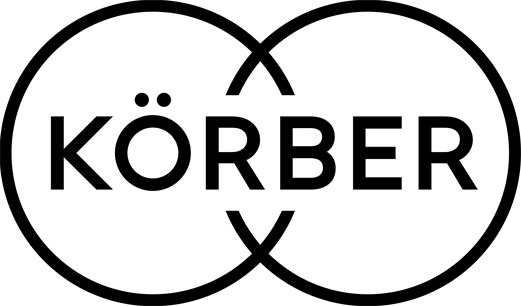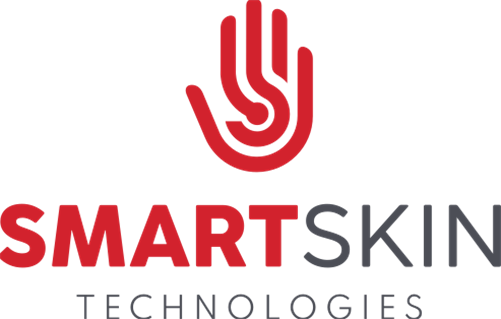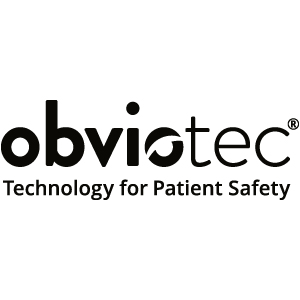
PDA Universe of Pre-Filled Syringes and Injection Devices Conference 2025
Shaping the Drug Delivery Ecosystem
Become a Sponsor and/or Exhibitor
Registration Options
Individual Registration
Group Registration
Shaping the Drug Delivery Ecosystem
Join us at the PDA Universe of Pre-Filled Syringes and Injection Devices Conference 2025 scheduled to take place on 21-22 October 2025 in Vienna, Austria, a city renowned for its rich history, elegance, and cultural heritage. This year’s theme, Shaping the Drug Delivery Ecosystem, explores the intersection of science, technology, patient experience, and sustainability in injectable combination products.
The program opens with the PDA Drug Delivery Innovation Award and a powerful plenary session featuring perspectives from patients and healthcare professionals. These keynotes will highlight the importance of designing solutions that are not only clinically effective but also patient-centric. Expert presentations will explore how pharmaceutical companies are responding to the evolving demands of combination product development and how evaluating drug and device deliverability - from the molecular scale to the patient experience - can drive meaningful innovation.
Key Topics
- User Engagement & Digital Health: Leveraging digital tools to enhance usability and adherence
- Advanced Delivery Systems: Large-volume injections, wearable devices, and new platform technologies
- Smart Testing & Automation: Integrating AI, automated visual inspection, and usability studies
- Sustainable Innovation: Strategies for eco-friendly packaging, device reuse, and lifecycle management
The program transitions into dynamic afternoon parallel session tracks that cover a wide range of practical and future-focused topics. Attendees will gain insights from real-world case studies and data on device usability, smart tech integration, needle clogging challenges, and AI-powered testing. Whether it’s about improving self-injection experiences or advancing sustainability strategies, the content is curated to offer tangible impact and foresight.
A vibrant exhibition hall will offer opportunities for discovery and networking. Leading solution providers will showcase the latest innovations in injection devices and packaging. For the first time, emerging startups will present focused pitches, offering a glimpse into the next generation of drug delivery. Complementing these are the well-established Tech Talks and guided poster walks that invite direct interaction and dialogue throughout the event.
Why Attend?
- Premier Forum: A platform for knowledge exchange and cross-industry dialogue
- Innovative Perspectives: Real-world case studies and cutting-edge tech demonstrations
- Unmatched Networking: Engage with industry leaders, innovators, and peers in an inspiring setting
A major highlight is the official networking event on the opening evening. This year’s theme, 'PDA Goes Rockabilly vs. Viennese Opera Ball', promises an unforgettable evening blending classical elegance with vintage rock and roll flair. It’s the perfect setting to continue conversations, make new connections, and enjoy a vibrant cultural experience with colleagues and industry friends.
We look forward to welcoming you to Vienna for an engaging and impactful event.
See you in October 2025!
Sincerely,
The Co-Chairs
Theresa Bankston, BD
Jakob Lange, Ypsomed
Program Highlights
The agenda preview is live! Check it out now and secure your spot by registering today.
Agenda
Discover What's Happening Each Day
(Note: The file may take a moment to download depending on your connection.)
CEST Daylight Time (UTC +2:00)
-
Registration Open
Foyer X4
-
Welcome and Innovation Award Announcement
Hall D
-
Committee Member:
-
-
Welcome From the Co-Chairs
Hall D
-
Co-Chair:
-
Co-Chair:
-
-
Opening Session Part I
Hall D
-
Moderator:
-
Patient Perspectives on the Treatment of Obesity with GLP1s
-
Physician Perspectives on the Treatment of Obesity with GLP1s
-
Keynote Speaker:
-
-
-
Networking Coffee Break, Exhibition, and Guided Poster Walk
Foyer X2-X3
-
Tech Talks
Foyer X3
-
PFAS Control Strategy in Pharmaceutical Rubber Stopper Production
-
Tech Talk Presenter:
-
-
VH2O2 Sterilization for Ready to Use (RTU) Containers
-
Tech Talk Presenter:
-
-
Rethinking Plunger Design for Modern Drug Delivery Needs
-
Tech Talk Presenter:
-
-
From Layers to Particles: Deep Learning for Silicone & SvP Characterization
-
Tech Talk Presenter:
-
-
-
Guided Poster Walk Part I
Foyer X3
-
Moderator:
-
A Strategic Approach to Design Control in Large Volume Ready-to-Use Cartridges
-
Poster Presenter:
-
-
Accelerating Autoinjector Clip Design Verification with Digital Twin Technology
Haughton Design’s Digital Twin Technology is revolutionizing the validation of autoinjector components, particularly retention clips, which are crucial for patient safety. Traditional design verification relies on physical prototyping and mechanical testing, leading to long development cycles, high costs, and regulatory challenges.
This innovative approach combines customized finite element analysis (FEA) with precise sample testing to predict mechanical behaviour, deformation under load, and potential failure points. By identifying issues early, reliance on extensive physical testing is significantly reduced, accelerating development. Additionally, strategic sample testing refines digital models for greater accuracy, ensuring confident design decisions while minimizing costly, time-consuming trials.
Beyond simulation, advanced tolerance and variability analysis help uncover manufacturing inconsistencies at the earliest stages, preventing expensive rework or production delays. By integrating these capabilities, Haughton Design delivers a more efficient, reliable, and cost-effective validation process compared to traditional methods.
Leveraging digital twin technology enables medical device developers to achieve faster iteration cycles, improved reliability, and streamlined regulatory submissions, ultimately reducing time-to-market. This poster will provide practical insights into how simulation-driven design verification is transforming drug delivery device development and how companies can incorporate these advanced tools into their R&D workflows.
Please list and/or describe the objectives of this abstract.: • Explain how digital twin technology can optimize the design verification of autoinjector retention clips.
• Demonstrate how computer simulation reduces physical testing time while ensuring compliance with medical device regulations.
• Highlight cost savings, efficiency gains, risk reduction, and enhanced reliability can be achieved through in-silico validation.
• Provide insights into real-world applications and success stories from the medical device industry.
-
Poster Presenter:
-
-
Advancing RTU Tub Innovations
-
Poster Presenter:
-
-
AI in Automated Visual Inspection of Prefilled Cartridges: Success Stories
-
Poster Presenter:
-
-
Assessing Plunger Stopper Movement under Low Pressure and Variable Temperature Conditions
Abstract: The sterility and performance of prefilled syringes (PFS) is critical for maintaining drug stability and device function. Plunger stopper movement (PSM) during storage and transport can lead to leakage, contamination, or changes in drug concentration. This study aims to develop a test methodology to evaluate PSM in PFS under low-pressure conditions while exposed to extreme temperatures, which is increasingly relevant for biologics and temperature-sensitive pharmaceuticals. A controlled experimental setup was designed to simulate low-pressure environments encountered during air transport and storage. Syringes were subjected to defined pressure differentials in a temperature-controlled chamber, replicating high or low temperature conditions. High-resolution image analysis techniques were used to measure plunger-stopper movement, assessing both absolute displacement and rate of movement. This study presents a novel methodology for evaluating plunger-stopper movement under defined storage conditions, offering a framework for assessing syringe performance and drug stability in real-world scenarios. The findings can inform regulatory strategies and manufacturing decisions to enhance the reliability of prefilled syringes for temperature-sensitive therapeutics.
Please list and/or describe the objectives of this abstract.: Develop a test methodology to assess Plunger Stopper Movement at variable temperature conditions Evaluate the effect of high and low temperatures to assess the absolute displacement and rate of Plunger Stopper Movement
-
Development and Use of an Innovative Methodology for Analyzing Visible Particulates
-
Development of a Portable Indenter Device for Assessing Tissue Stiffness at Injection Sites
-
Poster Presenter:
-
-
Ebeam Technology – Transfer Technology For Pre-Sterilized RTU Components
-
Poster Presenter:
-
-
Exploring Opportunities for Large Volume Subcutaneous (LVSC) Injections for Acute Illness Treatment from Both Patient and Healthcare Perspectives
Abstract: Whilst initial anti-infective treatment is intended to be delivered in a hospital setting by healthcare professionals, from a patient perspective there is an overarching ambition: to transfer the care currently provided in hospital settings to home environments. However, the feasible, systematic and user-centred considerations that surround this ambition are not yet understood. These are split into; Delivery Training Monitoring Our study has been to explore the HCP perspectives using different investigational tools such as; 'Contextual inquiry', to understand the existing practices, workarounds and protocols better. Identifying potential challenges and risks associated with administering treatment at home. 'Remote interview', To support the contextual inquiry sessions, a series of remote semi-structured interviews aim to build a holistic understanding of both the opportunities and potential barriers. Remote interviews introduce the potential to access specialists across the US, as recruitment is not constrained to a single location.
Please list and/or describe the objectives of this abstract.: To gain real world insight into potential barriers and considerations into delivering large volume sub-q at home.
-
Poster Presenter:
-
-
Identification of Foreign Particulate Matter in Assembled Autoinjectors Through Long-Time Tracking of Individual Particles’ Trajectories
-
Poster Presenter:
-
-
Impact of Injection Stress and Collection Methods on Drug Quality of Autoinjector
Abstract: Autoinjectors have greatly improved the precision and convenience of therapeutic administration. However, their widespread use requires careful evaluation of drug quality after ejection, as the injection process can alter important physicochemical properties crucial for regulatory compliance and patient safety. Two key factors must be considered when comparing ejected drugs to those in their original packaging. (1) Mechanical stresses during high-speed injection driven. The fast movement of the plunger can peel off more silicone oil from prefilled syringe. And shear stress occurs as the drug moves through the syringe and fine needles, causing high shear stress on the product. (2) The method of sample collection, especially the stand-off distance (the gap between the needle tip and the collection container), is critical. If the distance is too short, the high-velocity impact of the drug on container surfaces can cause mechanical stress, leading to particle formation or changes in molecular structure. Improper collection practices risk generating artifactual data, leading to false conclusions about drug stability during characterization studies. This study systematically evaluates these factors under controlled flow rates and stand-off distances, aiming to establish an optimized comparison method for autoinjector performance testing, promoting analytical accuracy and quality-by-design principles in drug development.
Please list and/or describe the objectives of this abstract.: 1. To share our techinical findings with EU centric audience. 2. Assess the Impact of Mechanical Stresses on Drug Quality 3. Optimize Sample Collection Methodology
-
Poster Presenter:
-
-
Impact Of Tolerable Injection Conditions And Interindividual Sample Geometry Variability On Tissue Backpressure, Its Variability, And Formulation Spreading, Resulting From Subcutaneous Injections
Abstract: Hypothesis about mechanical phenomena occurring in tissue during subcutaneous injections are only based on injections of small volumes and viscosities. Unfortunately, it is known that injections of larger volumes and/or viscosities induce larger tissue backpressures. Other mechanical phenomena could thus be activated in tissue during such injections, impacting tissue backpressure reached and formulation spreading. Also, tolerable subcutaneous injection condition extremums are up to now unknow, as the origin of the tissue backpressure variability for injections presenting same injection conditions. In this context, Nemera decided to carry out contrast absorption X-ray microtomography scans of swine samples before injections, in which cannulas were yet positioned. Such scans allowed the determination of sample geometry specificities, and distances of given microstructures with the injection point. Injections of placebos containing a radiopaque agent were then carried out in those same samples, measuring tissue backpressure. Another scan of each sample was also carried out post-injection, to observe formulation spreading. Contrast agent depots were then segmented, and orthogonal projections carried out. Injection conditions used have been chosen based on a first estimation of the tolerable injection condition extremums. The eventual existence of relations between injection conditions, sample geometry, formulation spreading, backpressure and its variability were then studied.
Please list and/or describe the objectives of this abstract.: These results focus on subcutaneous injections of large volumes and/or viscosities, and more specifically on their resulting tissue backpressure and formulation spreading by: - Generating hypothesis about mechanical phenomena occurring in subcutaneous tissue during injections - Establishing differences between depots induced by different injection conditions, covering their tolerable extremums, and taking into consideration interindividual sample geometry variations - Furnish phenomenology required to generate numerical models able to predict backpressure at the injection point and data allowing their validation - To take into consideration tissue backpressure for device dimensioning
-
Poster Presenter:
-
Poster Presenter:
-
-
Insights of Human Factor Considerations that may Influence User Experience in Drug-Device Combination Products Design
-
Mastering Novel Combination Product Transfer to Commercial Manufacturing
Abstract: In the rapidly evolving field of drug delivery, shortening the time to market for novel combination products is of paramount importance. On one hand, one might be tempted to progress serially to reduce risk and address the design, testing, and manufacturing of novel combination products in separate serial phases, which leads to long development times and delayed design transfers. On another hand, one might be tempted to skip intermediate stages and move directly from design straight into commercial Manufacturing. While this approach seems the shortest, the inherent high development risk due to a lack of design maturity will lead to costly and lengthy iterations in the commercial production phase, ultimately leading to long commercialization timelines. In this poster, we review the benefits of a development model based on a balanced process that requires simultaneous increase in maturity on the design, testing, and manufacturing approaches (i.e., as the product evolves so do the test methods and the assembly processes). We will review the processes and infrastructure required to enable such a model that relies on a careful balance of risk and knowledge.
Please list and/or describe the objectives of this abstract.: Communicate to the audience that there is an optimal development pathway that will lead to the shortest commercialization timeline that relies on calculated risks and a simultaneous development of the novel combination product design, test methods, and manufacturing processes. Such optimal timeline is achieved through a careful use of development and manufacturing capabilities limiting the number of intermediate transfers until the actual design transfer to commercial manufacturing.
-
Poster Presenter:
-
-
Mental Models and User Interface Design Considerations for Large-Volume Subcutaneous Infusion Devices
Abstract: High-dose biotherapeutics have spurred the need for large-volume subcutaneous (LVSC) delivery devices. At-home, self-administration with these devices has the potential to reduce cost of care and improve patient convenience. However, LVSC infusion devices require intuitive indicators to communicate critical status information to patients, particularly during extended-duration administrations. We conducted a mixed-methods study of n=7 patients with primary immunodeficiency diseases currently self-administering subcutaneous immunoglobulin by LVSC infusion at home. Patients completed a narrated card sort exercise comprising 16 indicator objectives (i.e., patient-centered goals, abstracted from the indicator or device itself). Our results suggest that patients fall into two distinct groups: a sedentary group primarily interested in end-of-dose alerts, and a mobile group requiring more comprehensive information to fit infusions into their schedules. Both groups had shared mental models for how they interpret their device indicators, and these findings provide design guidance for new and existing LVSC devices to enhance user experience. Overall, effective LVSC device indicators must provide easily interpreted in-progress feedback that can be monitored at a glance, include distinct end-of-dose notification with both alert and visual distinction, offer meaningful progress indicators calibrated to extended-duration administrations, and incorporate regimen sequencing information in a hierarchical design that avoids overwhelming users.
Please list and/or describe the objectives of this abstract.: Present findings on device indicators and user interface design to fit large-volume subcutaneous (LVSC) patients’ existing mental models and preferences. Identify how patients handle and interact with their current devices to understand how existing indicator systems are impacted by patients’ behavior and environment. Provide design guidance for new and existing LVSC devices to enhance user experience and therapy adherence.
-
Poster Presenter:
-
-
Mitigating Risk in ANDA Submissions: A Case Study on Leveraging Human Factors Data During Generic GLP-1 Combination Product Development
Abstract: As GLP-1 drugs approach patent expiration in the US, generic development is expected to rapidly accelerate. Navigating the ANDA submission process can be complex with many hurdles needing to be overcome. When submitting a generic drug-device combination product in the US, pharmaceutical companies must follow the FDA guidance “Comparative Analyses and Related Comparative Use Human Factors Studies for a Drug-Device Combination Product Submitted in an ANDA: Draft Guidance for Industry”. As part of this guidance, a threshold analysis is performed to assess the differences between the Reference Listed Drug (RLD) and the generic device. Generic manufacturers must carefully consider the design of the user interface and seek to minimize differences from the user interface of the RLD. Identified differences may necessitate a comparative use human factors (CUHF) study to prove the non-inferiority between the two products. To help prevent challenges from arising during regulatory review, generic manufacturers should consider implementing a comprehensive pre-ANDA strategy. During this presentation, a case study will show how a drug device developer performed a comparative analysis (part of threshold analysis) and formative CUHF study to help inform pharmaceutical companies’ final CUHF and de-risk their combination product ANDA submission.
Please list and/or describe the objectives of this abstract.: - Explore threshold analysis requirements for generic combination product ANDA submissions - Share insights into the role that comprehensive human factor strategies play in the development of biosimilar and generic combination product - Learn how formative comparative use human factors (CUHF) studies can inform methodological decisions for final CUHF studies
-
Navigating Biocompatibility For Combination Products
-
Poster Presenter:
-
-
Optimizing Drug Delivery For At-Home Use
-
Preclinical Evaluation on the Functionality and Usability of a High-Volume Auto-Injector (HVAI) as an Off-Body Injector Enabled by Recombinant Human Hyaluronidase PH20 (rHuPH20)
-
Poster Presenter:
-
-
Predicting Creep Performance of Spring-Loaded Parts in Injection Devices
-
Poster Presenter:
-
-
Push-to-Activate vs Button-Activated? A Self-Injection Device Interchangeability Study
-
Quantification of Silicone oil in Primary Packaging Materials using HPLC
Abstract: The siliconization of primary packaging containers, such as syringes and cartridges, is crucial for their functionality. To examine the amount of silicone oil within a container, a time-efficient quantification method with a low limit of quantification (LOQ) is needed. A silicone oil extraction method for syringes, cartridges and stoppers and a subsequent automated quantification method based on HPLC using a size exclusion column (SEC) and a charged aerosol detector (CAD) was developed. The method was utilized to support several development activities. Spray-coated syringes with different amounts of silicone oil were analyzed and the results were compared with functionality tests of filled syringes with a drug solution. Additionally, the batch-to-batch variation of the silicone oil amount in the syringes was monitored. The silicone oil amount in cartridges was analyzed prior and after the bake-on process in a dry heat tunnel of a commercial production plant. Moreover, free and cross-linked silicone oil on the surface of rubber stoppers was quantified and distinguished on the basis of the molecular weight. This showed diverse applications of the method in the pharmaceutical development.
Please list and/or describe the objectives of this abstract.: Quantification of silicone oil, functionality of syringes, processing of cartridges
-
Poster Presenter:
-
-
Reducing Product Carbon Footprint – Design Impact
-
Poster Presenter:
-
-
Size Matters? Patient Insights from a Wearability Study on Large-Volume OBDS
Abstract: As on-body delivery systems (OBDS) evolve to accommodate large-volume drugs, device size becomes a critical factor influencing patient perception and acceptance. While larger devices may initially seem intimidating, real-world wearability assessments provide deeper insights into the actual patient experience. This poster presents findings from a wearability study assessing patient perceptions of a modular OBDS designed for large-volume drug delivery. After outlining the study’s scope and design, we will explore how patients perceived the device at various time points, from first impressions to extended use. Key observations will highlight how initial perceptions regarding comfort, ease of wear, and overall acceptability evolve as patients become more familiar with the device over time.
Please list and/or describe the objectives of this abstract.: • Explore the impact of device size on patient perceptions in large-volume OBDS, focusing on how initial impressions evolve with extended use. • Present Stevanato Group’s wearability study, highlighting the study’s methodology and key findings derived from patient feedback.
-
Poster Presenter:
-
-
Sustainability in Subcutaneous Drug Delivery: Collaborative Opportunities from the SC Consortium Benchmarking Initiative
Abstract: The Subcutaneous Consortium's Sustainability Benchmarking Initiative led a comprehensive study examining organizational commitments, priorities, and efforts toward sustainability in subcutaneous drug delivery systems. The initiative engaged 12 member organizations representing major pharmaceutical companies and device manufacturers, collecting both quantitative data and qualitative insights through interviews with 29 subject matter experts across environmental sustainability, device development, and packaging functions. The research revealed a significant gap between high-level corporate sustainability commitments and actual implementation. While member organizations demonstrate strong strategic commitment to sustainability, the incorporation of sustainable practices in product development remains moderate with investments often not matching stated ambitions. The benchmarking identified several critical barriers to sustainable transitions: competing priorities, regulatory uncertainties, challenges in material selection, and limitations of current take-back and recycling programs. Despite these challenges, the study revealed significant opportunities for industry collaboration, particularly in standardizing approaches to circularity, developing industry-wide take-back programs, and creating common specifications for sustainable materials. The findings emphasize that sustainability in pharmaceutical delivery systems is not an area for competitive differentiation, but rather an opportunity for pre-competitive collaboration to establish new industry standards and practices. As regulatory pressures increase globally, this collaborative approach will be essential for meeting both sustainability goals and patient needs.
Please list and/or describe the objectives of this abstract.: • Present findings from the SC Consortium's Sustainability Benchmarking Initiative involving 12 member organizations and 29 subject matter experts across pharmaceutical and device manufacturing companies • Identify gaps between corporate sustainability commitments and actual implementation in subcutaneous delivery systems • Highlight opportunities for industry-wide collaboration on circularity, take-back programs, and sustainable material selection • Provide a framework for pre-competitive collaboration to establish new sustainability standards in the industry
-
Poster Presenter:
-
-
Sustainable Drug Delivery Devices: A Whole Value Chain Approach
-
Poster Presenter:
-
-
The Big Misunderstandard: On the Application of ISO 2859-1 for Drug Delivery Device Lot Inspection
Abstract: In this presentation, we focus on the application of ISO 2859-1Sampling Procedures for Inspection by Attributes to lot acceptance of auto-injector devices. The presentation goes over the statistical basis of the standard rules to provide a solid understanding of their applicability. It points out the pitfalls and nuances of certain elements and provides a maturity-based strategy that leverages the strengths of the standard rules. Examples are provided for a hypothetical auto-injector device along with a proposed methodology to derive appropriate acceptance quality limits (AQL) for different critical attributes. The presentation concludes with an overview of an automated software application to implement the standard within a manufacturing workflow.
Please list and/or describe the objectives of this abstract.: Provide an understanding of the standard beyond the procedural adherence to its tables and rules. Point out common misunderstandings of certain details of the standard Present a user-friendly software package to implement the standard within a manufacturing workflow
-
Poster Presenter:
-
-
Transforming Sterile Manufacturing For Syringes
Abstract: Oncomed implemented new PFS Filling and automatic Syntegon inspection lines. Our presentation will highlight challenges and key breakthroughs in deploying the isolator line, showcasing Oncomed’s commitment to innovation, operational excellence, and sustainable pharmaceutical production. Through agile engineering and cross-functional collaboration, we successfully validated a GMP-compliant aseptic facility within 3.5 years, producing 3 million syringes across 10 strengths in 1 mL Long syringe bodies. The dual filling system (TPF and peristaltic) runs at 30,000 syringes/hour, reaching 100 million syringes annually after 81 APS/PQ/PPQ runs in six months. We will discuss Annex 1 compliance, including cleanroom classification, sterile filtration (PUPSIT), and sterilization/cleaning approaches validated through qualification studies. The validation program, managed by 11 teams, covered isolator mock-up, RA, DQ, FAT, installation, SAT, IQ, OQ, VHP cycle validation, product process development, and full PPQ and cleaning validation. Additionally, we will detail the development and optimization of an automatic optical inspection machine with 23 high-resolution cameras and HVLD for container closure integrity. Beyond production expansion, modernization efforts include a centralized compounding and weighing area, optimizing material flow, reducing cross-contamination, and enabling seamless handling of highly potent APIs (OEB 3–OEB 6).
Please list and/or describe the objectives of this abstract.: Analyze – Examine rising global demand for injectable oncology treatments and its manufacturing impact. Design – Develop a high-speed syringe production line for efficiency, safety, and sustainability. Implement – Integrate advanced filling systems for precision and sterility. Evaluate – Ensure Annex 1 compliance and assess automated inspection effectiveness. Optimize – Enhance material flow and minimize contamination risks. Reduce – Shorten project timelines through parallel design, build, and validation. Innovate – Highlight agile engineering and cross-functional collaboration. Compare – Assess operational efficiency before and after modernization. Summarize – Key outcomes, GMP compliance, and future readiness.
-
Understanding Engagement With Sustainable Injection Devices Through Behavioural Science
-
Unlock Key Insights for Robust Method Validation in Design Verification and Manufacturing of Medical Devices
-
-
Opening Session Part II
Hall D
-
Moderator:
-
A Holistic Assessment of Drug/Device Deliverability: From Molecule to Patient
-
Transforming Traditional Pharma into a Combination Products Company
-
Q&A, Discussion
-
Interactive Questionnaire
-
-
Networking Lunch Break, Poster Session & Exhibition
Foyer X2-X3
-
Tech Talks
Foyer X3
-
A Journey Towards Cyber-Resilient Drug Delivery Systems
-
From Market Trends to Production Readiness: Empowering Medical Device Manufacturing
-
Tech Talk Presenter:
-
-
Annex 1 Compliant RTU Transfer to Grade A With E-Beam
-
Tech Talk Presenter:
-
-
Innovating Primary Packaging: The New SCHOTT TOPPAC® Cartridge
-
Tech Talk Presenter:
-
-
Vytal®: Innovative RTU Snap-Fit Closure System
-
Tech Talk Presenter:
-
-
Environmental Responsibility and Pioneering Usability
-
Tech Talk Presenter:
-
-
-
Session 1, Track A
Hall D
-
Moderator:
-
Lessons Learned: A Device Manufacturer's Perspective on the Launch of the First Biosimilar in an On-Body Injector
In 2024, the launch of Udenyca™ marked a significant milestone in the biosimilar landscape as the first biosimilar drug delivered via an on-body electromechanical pump. This presentation will explore the possible advancements allowed by the FDA, in the design and functionality of an on-body device to be used for the delivery of a biosimilar compared to its originator. Key enhancements include a reduced injection time and the introduction of an auto-deploying needle, replacing the traditional healthcare professional-inserted cannula, thereby streamlining the patient experience. Attendees will learn how biosimilar companies are investing in cutting-edge delivery technologies that rival those of innovator products. This leap forward not only enhances patient convenience but also demonstrates a proactive approach to differentiation in the competitive biosimilar market. For instance, a 5 mL drug traditionally administered in the innovator product through multiple injections could now be delivered in the biosimilar combination product via a single on-body device, showcasing the potential for innovative delivery methods that outpace those of originators. Join us to understand the collaboration between our team, our pharmaceutical partner, and the FDA to elevate the patient experience with a biosimilar combination product, reinforcing the importance of innovation in the evolving landscape of drug delivery. -
Analysis Framework for Wearable Injector Systems to Improve Functionality, Safety and Reliability
Early clinical results for wearable large volume injectors are promising; however, published real-world clinical data is limited and the systems will need to evolve to address critical challenges related to their usability, reliability, safety, cost and sustainability. This presentation lays out a framework of additional tools that can be implemented to test and improve performance, as well as potentially drive innovation in this space. This framework will include discussion, analysis examples addressing the following: •Adhesive Performance: Investigating the reliability and performance of adhesives during user testing. This will include analysis of adhesive patches after use, with a focus on the adhesive surface as interfacial with the user. •Injector Malfunction: Simulation of injector cannula position, orientation, and insertion depth for varying abdominal morphologies, user postures and wearable geometries using finite element analysis. •Reliability for High-Viscosity Biologics: Evaluation of flow analysis of the injectate using computational fluid dynamics (CFD) and in vitro testing. •Skin Reactions: Evaluation of leachables and extractables in adhesives and other housing plastics. The study will include additional discussion on the continuous innovation in the functionality, size, and cost of the systems. Examples will be detailed for the methods above, including best practices and insight from the authors. -
Advancing Platform Technologies for Combination Products
As drug manufacturers and device vendors increasingly seek to leverage existing device technologies and components from previously approved combination products, the industry faces a growing challenge: how to efficiently manage platform technologies while ensuring safety, effectiveness, and regulatory acceptance. There are multiple approaches to platform adoption, each with distinct technical, regulatory, and lifecycle management challenges: • Minor modifications to an existing combination product to accommodate regional regulatory requirements, improve usability, or address post-market feedback and complaints. • Repurposing an entire device or key components of it for a new drug or biologic combination product. • Developing a platform technology from the outset to support a family of drugs or biologics. • Marketing platform technologies to support as many drug products as possible, emphasizing efficiency, standardization, and lifecycle management. This presentation will dive into these approaches, walk through real-world case studies, and provide practical insights into how to successfully implement and manage platform technologies, ensuring they meet regulatory expectations, patient needs, and lifecycle considerations. Attendees will also gain insights into structured and integrated approaches for tracking and managing platform reuse across multiple applications, reducing inefficiencies, driving consistency, and ensuring safety and regulatory alignment. -
Session 1, Track A: Q&A, Discussion
-
Moderator:
-
Panelist:
-
Panelist:
-
Panelist:
-
Panelist:
-
-
-
Session 1, Track B
Hall G
-
Moderator:
-
Exploring At-Home Cancer Treatment Potentials: A Comparative Study of Oncology Nurses' Perspectives and Practices in the EU and US
This study examines the perspectives and preferences of oncology nurses from the European Union (EU) and the United States (US) regarding at-home cancer treatment. A qualitative approach was used to gather insights from 16 nurses (6 from the EU and 10 from the US) through in-depth interviews. The findings highlight a strong interest in expanding at-home care options to improve patient outcomes and quality of life. Nurses emphasized the need for comprehensive support services, including psychological support, education on self-care, and financial assistance, to facilitate successful at-home treatment. They also underscored the importance of interdisciplinary collaboration and adequate resources to address the complex needs of cancer patients. The study reveals both similarities in the challenges faced by nurses across both regions, such as managing mental health issues and ensuring access to necessary care resources, and differences due to the healthcare systems in both geographies. Overall, the results suggest that oncology nurses see significant potential in at-home treatment but require better support systems to implement these care models effectively. This study contributes to the development of more effective and patient-centered cancer care strategies, suggesting a hybrid model of treatment that consists of both at-home and clinic-based care while relying on mobile providers for certain therapy aspects. -
Driving Adherence and Improving the Patient Experience through At-home Engagement
The healthcare industry is undergoing a major transformation toward patient-centric care, powered by advancements in science and the increasing adoption of self-administered treatments. However, poor adherence remains a significant challenge, with prescription abandonment, inconsistent training, low persistence rates, and underutilization of patient support programs limiting the full potential of these therapies. At-home patient engagement solutions—combining tailored device training, digital tools, and real-world data insights—are emerging as a key strategy to improve persistence and adherence. In a recent study with a leading specialty pharmacy, patients using an at-home engagement program demonstrated: • 38% faster time to first self-injection • 15% quicker first refill ordering • 40% higher adherence (≥80% proportion of days covered, PDC) • 19% increase in six-month medication persistence Recognizing this opportunity, Noble partnered with a leading self-injectable brand and specialty pharmacy to develop an at-home engagement program that accelerates patient onboarding, builds confidence, and enhances persistence. This presentation will share key findings and best practices for designing effective patient engagement solutions and strategies for scaling data-driven programs. Attendees will leave with actionable insights on how to implement these solutions within their own organizations to drive measurable impact. -
B-COMPASS: Designing to improve Patient Experience, Adherence and Outcomes
Non-adherence to treatment has a major impact both on the effectiveness of the products we deliver to patients and the wider societal costs of poor health. Increasing adherence levels requires understanding the key drivers for a patient’s adherence behavior and expanding our definition of ‘product’ to meet their changing support needs as well as their delivery needs. The pan-industry IMI-sponsored BEAMER project has developed the pragmatic B-COMPASS framework to understand these drivers and the impact they have on a patient’s support needs across the patient journey. The B-COMPASS framework identifies the support needs of patient sub-groups, enabling the future design and delivery of effective and targeted patient support. It also predicts relative adherence, allowing prioritization of resources. The support can be linked with drug products, devices, packaging, and training to create a broader product eco-system enabling more effective outcomes. -
Session 1, Track B: Q&A, Discussion
-
Moderator:
-
Panelist:
-
Panelist:
-
Panelist:
-
-
-
Session 1, Track C
Hall K
-
Moderator:
-
Innovative Design and Testing Strategy for an Autoinjector to Precisely Determine Leaks in the Prefilled Syringe
Autoinjectors are widely used drug delivery devices designed to ensure convenient and reliable self-administration of injectable medications. However, accurately measuring Container Closure Integrity (CCI) on the prefilled syringe (PFS) inside a fully assembled autoinjector presents significant challenges. Fundamentally, the convoluted design of autoinjectors restricts access to the PFS and limits the use of established vacuum-based CCI testing. Such methods rely on stabilisation of the syringe plunger as vacuum effects alter its position. Hence, testing is commonly conducted on isolated PFS only which require autoinjector disassembly. Disruptive dismantling methods in combination with autoinjector design constraints pose significant risk to the sterility of the PFS. To overcome these challenges, we propose a novel testing strategy that evaluates the autoinjector in a partially disassembled state: The distal drive package is removed from the finally assembled autoinjector and solely the PFS-containing section is tested for CCI using deep vacuum (LFC). This approach minimizes the risk on PFS sterility as the partial disassembly does not involve PFS removal and splits the autoinjector at an inherent separation point. The gained access allows the syringe plunger to be precisely positioned and held in place using a floating pin concept. -
Evaluation of Container Closure Integrity and Failure Modes of Prefilled Syringes at Cryogenic Storage Temperatures
Advanced Therapy Medicinal Products (ATMPs) such as gene therapy and somatic cell therapies require long-term storage at extremely low temperatures (-80°C to -196°C) to maintain biological activity, stability, and efficacy. Challenges include cryopreservation, efficient delivery of small volumes, and ensuring container closure integrity (CCI) throughout the product's shelf life. Prefilled syringes (PFS) offer a promising solution due to their dosing accuracy, low residual volume, and ease of use. The integrity of PFS at ultra-low temperatures depends on the interaction between its components, considering distinct material properties. This study examines the CCI and failure mechanisms of PFS stored at -50 to 196°C. Key factors critical for CCI failure include storage temperature, fill volume, storage orientation, and freezing/thawing rates. Changes in headspace composition during freeze-thaw cycles were assessed for PFS filled with water or a drug analog. Using differential scanning calorimetry (DSC), microscopy, and thermo-mechanical characterization, the physical and thermal properties of syringe components were analyzed. Results showed CCI failure at temperatures below the glass transition temperature of the stopper or needle shield. This work enhances the understanding of CCI failure conditions and highlights the need for specialized testing setups and container-closure systems for cryogenic temperatures. -
Unraveling Pre‑filled Syringe Needle Clogging by Neutron and Synchrotron X-ray Imaging
Needle clogging becomes a challenge with the shift toward higher-concentration monoclonal antibody and protein formulations designed for a single injection delivery [1]. Increased viscosity in these formulations can lead to greater resistance to fluid flow and an elevated risk of clogging. Additionally, chemical stability issues, such as zinc (Zn) migration from the rigid needle shield (RNS), may contribute to increased viscosity, gelation, and clogging [2]. This study utilizes neutrons and synchrotron X-rays to visualize clogging inside pre-filled syringes (PFS) needles. These non-destructive techniques enable in-situ investigation of needle contents without removing the RNS. We monitor PFS under temperature and pressure conditioning to assess their impact on clog formation [3]. Particularly, synchrotron X-ray tomography provides detailed morphological insights into the liquid inside the needle. Furthermore, we present a novel approach to investigate Zn migration from the RNS to the drug formulation using synchrotron-based X-ray fluorescence imaging [4]. This research advances understanding of needle clogging and can guide strategies to improve PFS performance. [1] Sánchez-félix M, et al. Adv Drug Deliv Rev. 2020;167:66 77. [2] Fukuda M, et al. Eu. J. Ph. Bioph. 2022;178:179 86. [3] Hu G., et al. Ph. Res. 2024;41:547 556. [4] Hu G., et al. Ph. Res. 2025 submitted.-
Presenter:
-
-
Session 1, Track C: Q&A, Discussion
-
Moderator:
-
Panelist:
-
Panelist:
-
Panelist:
-
-
-
Networking Coffee Break, Exhibition and Guided Poster Walk
Foyer X2-X3
-
Tech Talks
Foyer X3
-
From Stress to Success: A Shot at Zero Defects
-
Tech Talk Presenter:
-
-
Addressing Large-Volume Subcutaneous Delivery Challenges with enFuse: A Patient- and Provider-Centric Solution
-
Tech Talk Presenter:
-
-
Ensuring Excellence in Manufacturing
-
Tech Talk Presenter:
-
-
Novartis Contract Manufacturing - Fill and Finish Capabilities
-
Tech Talk Presenter:
-
-
Devices for Combination Products: A Partnership Worth More Than the Sum of Its Parts
-
-
Guided Poster Walk Part II
Foyer X3
-
Moderator:
-
A Holistic Approach to De-Risking and Accelerating Subcutaneous Formulations Development
-
Poster Presenter:
-
-
A New Form of Protein Aggregates: An Early Warning Sign for Polysorbate Degradation
-
Poster Presenter:
-
-
AI-Driven Injection Molding & Assembly Optimization in MedTech
-
Poster Presenter:
-
-
Beyond App Fatigue: Alternative Ways of Adherence Monitoring in Home Injections
-
Poster Presenter:
-
-
Capitalizing on ASME V&V40: Regulatory-Grade Modeling and Simulation as an Alternative to Testing
-
Poster Presenter:
-
-
CCI Testing of High Viscosity Product in Pre-Filled Syringe
-
Determining the Oxygen Permeation Rate through Different Syringes
-
Poster Presenter:
-
-
Development of High-Concentration PFS Combination Products: A Strategic Approach to Life-Cycle Management for a Biological Drug
-
Poster Presenter:
-
-
Development of Plungers for Pre-filled Syringe Systems
-
Device Attributes that Matter: Patient Preferences and Drivers of Treatment Migration in Immunoglobulin Therapy
-
Poster Presenter:
-
-
Double-Sided 1.5 mL Fluoropolymer-Laminated Plunger for Low-Volume Cartridge Solutions
-
Dual-Chamber Device Holding Carrier Design Considerations
-
Enabling Conversion of IV Formulation Into SC Formulations
-
Poster Presenter:
-
-
Evaluation of PLAJEX™ 1mL Long Luer Lock Pre-Fillable Syringe with NeoFlex™ Plunger Stopper after Deep Cold Storage
-
Poster Presenter:
-
-
Exploring Platform Synergies: Enabling High-Viscosity Biologic Delivery with SHL Medical's Molly® 2.25 mL Autoinjector and Stevanato Group’s Syringes
-
Poster Presenter:
-
Poster Presenter:
-
-
Faster and Safer Single-Use Technologies From Thaw to Final Fill
-
Poster Presenter:
-
-
From Flow to Blockage: The Dynamics of Needle Clogging in PFS
-
Impact of Incomplete Plunger Rod Engagement on the Functionality of Prefilled Syringes
-
Poster Presenter:
-
-
Impact of VH2O2 Sterilization as Established Category A Modality
-
Improved Design Robustness by Combining Injection Molding Software With Measuring Software
-
Mechanical Disturbances and Sterility Integrity in Pre-Filled Syringe Assembly: Evaluating Risks of Stopper Displacement and Rotation During Plunger Rod Installation
-
Midazolam Needle-Free Auto Injector Demonstration of Intramuscular Injection by MRI and PBPK Modeling to Show No Impact of Subcutaneous Fraction on Midazolam Exposure
-
Poster Presenter:
-
-
Mitigating CCI Risks in PFS Under Deep Cold Storage: A Case Study Using Headspace Analysis
-
Poster Presenter:
-
-
Patient Characterisation For Setting Design Constraints – A Case Study on Gathering Anthropometric Data
-
Poster Presenter:
-
-
Plunger Movement in Prefilled Syringes: An Altitude Simulation Study
-
Poster Presenter:
-
-
Preclinical Investigation of Subcutaneous Delivery of an Antibody-Drug Conjugate (ADC) with Recombinant Human Hyaluronidase PH20 (rHuPH20) and a High-Volume Auto-Injector
-
Poster Presenter:
-
-
Redefining The Sustainability Benchmark
-
Poster Presenter:
-
-
Risk Management For Sterilized Delivery System Components in Their Packaging: How to Define and Control The Risk of Post-Sterilization Contamination?
-
Poster Presenter:
-
-
Statistical Method for Classifying Abdominal Stiffness Behavior in a Human Factor Dataset
-
Poster Presenter:
-
-
VH2O2 Sterilization Under Deep Vacuum conditions for PFS Containing a Thermosensitive Drug Product
-
Poster Presenter:
-
-
-
Session 2, Track A
Hall D
-
Moderator:
-
Dual Liquid Drug Formulation Trends & Challenges: Incremental Innovation to Enable Usage of Standard Platform Components and Address Growing Needs
With advancements in drug development, there is a growing trend of co-administration or co-formulation of two or more unique liquid drugs, such as with GLP-1s, recombinant hyaluronidase, and mAbs. The development of co-formulated or co-administered injectable drugs may enable opportunities for enhanced clinical and patient experience benefits. When two unique liquid molecules are incapable of being co-formulated, they may need to be stored and injected separately. Coformulation efforts may pose unforeseen compatibility, manufacturing, and regulatory challenges, leading to delays and increased costs. Various dual-chamber container systems and devices are available today, although they may require validation of new materials, additional components, and/or significant changes to secondary device systems to allow for integration. This presentation aims to explore the rising trends in co-administration and co-formulation of biologic therapeutics and existing solutions. BD will showcase exploratory studies, some conducted in partnership with critical industry stakeholders, including pharma, device suppliers, and machine makers, to inform the design of a novel sequential injection plunger stopper. Leveraging an incremental innovation approach, this solution has been designed to allow for the separation and sequential injection of multiple liquid drugs in a single standard prefillable syringe and auto-injector. -
Addressing Challenging Formulations: A Novel Drug Delivery System Supporting the Automated Reconstitution and Delivery of Lyophilized Solutions
Maintaining the stability of liquid formulations is a well-recognized challenge in the pharmaceutical industry, as some drugs and biologics cannot be formulated into a stable liquid. Lyophilization can enhance stability by removing water under low-temperature and low-pressure conditions (freeze-drying), preserving structural integrity, physicochemical attributes, and bioactivity, while extending shelf life. Lyophilized products are typically packaged in a vial and presented in a kit. These kits include separately packaged diluent, transfer syringes, and other supplemental materials to facilitate reconstitution and administration. Vial kits have complex and burdensome user steps, sometimes requiring training, which pose patient compliance challenges. It is readily recognized that the Critical Quality Attributes (CQA) for a dual-chamber cartridge used in an autoinjector are unique, wherein the formulation needs to be designed with those CQA in mind. The device presented in this work enables the automated reconstitution and self-administration of lyophilized drugs with a dual-chamber cartridge. The device supports automated reconstitution and is built with SHL’s Needle Isolation Technology (NIT®) to avoid clogging during reconstitution and optimize cannula gauge, thickness, and length. The successful collaboration between SHL and Lyo-Tech Inc. showcases the viability of a combination dual-chamber cartridge autoinjector for improved patient compliance with the delivery of lyophilized formulations -
Challenging Design Requirements to Unlock Innovation and Improve Sustainability
In a world where rising production volumes demand greater manufacturing efficiency and sustainability, this presentation explores the crucial need for precisely defining device design requirements. Properly specified requirements are key to balancing safety, functionality, and innovation. Yet, the industry’s tendency to maintain the status quo often leads to unnecessary contingencies and over-engineered solutions. While this risk-averse mindset may enhance reliability, it can result in devices that are unnecessarily complex, costly, and harder to use.
Consider autoinjectors: the typical conservative approach specifies drive spring force based on fixed-speed syringe testing to meet a set dispense time, adding significant safety margins to prevent stalls. This method, while safe, is flawed - spring-driven systems are force-limited, not speed-controlled. Evidence shows that testing based on constant force, rather than speed, drastically reduces force requirements while still meeting performance needs.
Lowering the force specification doesn’t just impact spring size; it decreases long-term stresses, reduces actuation forces, cuts material usage, and minimizes the risk of syringe breakage. Chasing minimum injection times and aligning with conventional needle insertion depth are other examples where industry norms should be challenged, rather than simply adopted. By rethinking design requirements, we can create safer, more efficient, and more sustainable devices. -
Session 2, Track A: Q&A, Discussion
-
Moderator:
-
Panelist:
-
Panelist:
-
Panelist:
-
Panelist:
-
-
-
Session 2, Track B
Hall G
-
Moderator:
-
A Study of Factors Impacting User Perceptions of Reusable and Disposable Autoinjectors
This study examined the different factors that may influence patient and health care professional perceptions on the ease of use and overall preferability of different autoinjector types (single-use disposable, reusable electro-mechanical and reusable mechanical).
The study comprised 52 participants, including experienced and naïve adult and adolescent users, as well as healthcare professionals across 3 different areas of the US, intending to cover a wide spectrum of potential viewpoints.
The data gathered provides insight into whether and how perceptions of the relative importance of these different factors and preferences change with increased exposure to information:
1) When provided with specifications and descriptions of devices only
2) When provided with samples that could be looked at and touched, but not used
3) Following use experience with each device
Further analysis also challenges the long-held and common hypothesis that reusable devices are considered non-preferred over single-use disposable devices because of the additional use steps involved and how readily translatable ease of use and overall preference are. -
Autoinjector considerations for generic GLP-1 drug-device development: Utilizing comparative human factors studies to assess the usability impact and preference of differing activation mechanisms
With global GLP-1 sales projected to reach $139 billion by the end of the decade, generic development is expected to accelerate in the coming years. Beyond demonstrating bioequivalence between the generic drug-device combination product and the Reference Listed Drug, generic manufacturers should carefully consider the user interface, inclusive of the drug delivery system, to ensure there is no impact on the safety and efficacy of the generic combination product. Among drug delivery systems used to deliver medications in the treatment of chronic conditions such as type 2 diabetes and chronic obesity, autoinjectors are widely used and can be generally categorized into two groups based on their activation mechanism: push-on-skin and button-activated autoinjectors. In order to assess the risks associated with switching between autoinjector types, two formative human factors studies were conducted in patients with a high BMI. During this presentation, we will explore the user interface for both types of autoinjectors, assessing patients’ usability and preference. The first study evaluated usability implications when switching from a push-on skin autoinjector to a button-activated autoinjector, while the second study assessed patient comfort and preference when activating autoinjectors directly on their skin. -
Epinephrine Autoinjector Re-imagined: An Introduction to Design Thinking and User-centered Innovation
Innovation is essential for businesses seeking to remain competitive and foster growth by creating new products and services that meet user needs. Design thinking provides a user-centered approach to identify what is valued by users. Through contextual research, user pain points are uncovered and prioritized, revealing a new and meaningful future state. This mindset guides an iterative process of conceptualization, prototyping, and user testing, allowing design teams to explore ideas and thoughtfully develop features and design elements that resonate with users. Ultimately, insights from this process transform unmet needs into a compelling expression of form and function, delivering relevant and delightful user experiences. This case study explores a conceptual design for an epinephrine autoinjector and introduces the principles and processes of design thinking. It discusses key topics, including an overview of design thinking and its user-centric approach, as well as strategies for transforming research data into insights that lead to higher-value products. Additionally, it examines the relationship between aesthetics, usability, user adoption, and cognitive engagement, while highlighting the importance of user experience in supporting behavior change, adherence, compliance, and improved patient outcomes. Finally, the case study outlines best practices for nurturing new ideas and fostering an environment of creative confidence.-
Presenter:
-
-
Session 2, Track B: Q&A, Discussion
-
Moderator:
-
Panelist:
-
Panelist:
-
Panelist:
-
Panelist:
-
-
-
Session 2, Track C
Hall K
-
Moderator:
-
AI-Driven Automated Visual Inspection for Combination Products: Challenges and Solutions in Large-Scale such as GLP-1 Manufacturing
The increasing demand for medicines such as GLP-1-based therapies has led to large-scale manufacturing of combination products such as prefilled syringes and cartridges. This shift presents new challenges for Automated Visual Inspection (AVI), requiring advanced defect detection while maintaining efficiency at high throughput. Artificial intelligence (AI) and machine learning (ML) are emerging as transformative technologies for AVI, enhancing defect classification, reducing false rejects, and improving process robustness.
This presentation is structured into four key sections:
First, we explore the evolving challenges of AVI in the context of AI and large-batch GLP-1 production.
Second, we outline the prerequisites for successfully qualifying an AVI system for combination products, addressing defect libraries, validation strategies, including compliant visual inspection validation test sets.
Third, we examine AI applications in AVI, discussing how ML algorithms improve detection accuracy and system adaptability, but also AI's limitations.
Finally, we focus on the specific challenges of large-scale cartridge inspection, such as high-speed image processing, container
variability, and defect classification.
This session will provide valuable insights into how to utilize AI in AVI and practical recommendations for the implementation and validation of AVI for large-scale manufacturing. -
Minimizing Particulate Matter in Intravitreal PFS by Improving Syringe Manufacturing Process
Intravitreal injection is a procedure to place a medication directly into the space in the back of the eye called the vitreous cavity. The cases of intravitreal injection have been increasing over years, led by an increasing number of patients for ocular diseases, as well as wider availability of intravitreal injection drugs, including innovative biopharmaceuticals and their biosimilars. Prefilled syringes (PFS) are widely used for intravitreal injection for multiple advantages, including ease of use, potential prevention of endophthalmitis cases, and lower overfill. One of the challenges in developing and manufacturing an intravitreal PFS is particle management, and there are strict limits in compendial requirements such as USP < 790> and USP < 789>. On the other hand, particle management in PFS products requires a holistic approach through a collaboration between the pharma company and the primary container supplier to optimize every step of the value chain. In this presentation, Roche will share pharma’s perspective for the ideal intravitreal PFS solution with a focus on particle load management throughout the value chain. Terumo will co-present to share the primary container supplier’s perspective with a case study in improving the ready-to-fill syringe manufacturing process to achieve a lower and more consistent particle level in the primary container used for intravitreal injection. -
Cross-Industry Collaboration: A Fast and Effective Approach to face Market Challenges for Drug Product
In the pharmaceutical industry, supply chain disruptions present critical risks that can compromise drug availability and patient care. Ensuring supply continuity requires a proactive and structured approach to risk management, particularly in highly regulated environments like the pharma industry. This case study explores the strategic collaboration between Stevanato Group, a leading manufacturer of primary packaging solutions, and Johnson & Johnson Innovative Medicine, a pharmaceutical company, in resolving a critical supply chain issue that had the potential to impact drug product supply. By leveraging a cross-functional and data-driven methodology, the two organizations successfully identified the root cause of the disruption and implemented a comprehensive mitigation strategy. A systematic RCA was performed to investigate the underlying failure modes, incorporating statistical process control, historical data trend analysis, and real-time monitoring of critical quality attributes. The team thoroughly explored and generated data for all potential root causes, which enabled them to develop a predictive digital tool that integrated all the learnings from the investigation. This approach led to the formulation of targeted CAPA. The resolution strategy involved process optimization and the application of risk-based decision-making. Mutual trust, effective stakeholder communication, and transparent information sharing were essential in accelerating issue resolution and preventing recurrence -
Session 2, Track C: Q&A, Discussion
-
Moderator:
-
Panelist:
-
Panelist:
-
Panelist:
-
Panelist:
-
Panelist:
-
-
-
End of Day 1 and Networking Event
PDA Goes Rockabilly VS. Viennese Opera Ball Opposites attract, let the contrast shine Experience a night where classic elegance meets rock ,n' roll rebellion. Dress to impress in your best vintage rockabilly attire or come as a vision of Viennese sophistication. Dance to the beat of rockabilly band and waltz under the chandeliers.
CEST Daylight Time (UTC +2:00)
-
Registration Open
Foyer X4
-
Morning Session Interest Group on Pre-Filled Syringes
Hall G
-
Moderator:
-
Revolutionizing Traceability with RFID – A Pilot Study
-
Co-Presenter:
-
Co-Presenter:
-
-
Q&A, Discussion
-
-
Opening Session Day 2
Hall D
-
Moderator:
-
Five Years of Providing NBOps – A Notified Body Perspective of Lessons Learnt, Opportunities for Improvement, and a Look to the Future
As a Notified Body (NB), BSI issued the first Notified Body Opinion (NBOp) in January 2020, and since that time, has needed to continually review processes and evolve to deliver this key service to the Pharmaceutical Industry. The session will provide a top-level overview of the history behind the introduction of Article 117 and what the requirements are from an NB perspective. The presentation shall also share some key lessons learnt since the first Opinion was issued, offer some practical guidance for engagement with an NB, and look to future initiatives and opportunities to improve the process for all Stakeholders. -
Reflections on the (EU) 2017/745 Art. 117 'Notified Body Opinion' – a Pharma Company Experience
MDR's Article 117 introduced an amendment to the medicinal product Directive 2001/83/EC, necessitating a separate assessment of the device component against relevant General Safety and Performance Requirements (GSPRs). This has added complexity to the submission and approval process, as most new or modified integral drug-device combinations now require a Notified Body Opinion (NBOp) to confirm compliance with the GSPRs. The unpredictable nature of the NBOp process - characterized by variable timelines, uncertain scope, and a lack of firm dates - presents a significant challenge for stakeholders, contrasting sharply with the predictable timelines of the EMA. This presentation will explore challenges and lessons learned from obtaining NBOps for prefilled syringes and prefilled syringes in autoinjectors. It will also provide insights for ensuring an efficient NBOp process and highlight areas still needing clarification and improvement, such as aligned terminology and consistent handling of product changes. -
Q&A, Discussion
-
Moderator:
-
Panelist:
-
Panelist:
-
-
-
Networking Coffee Break, Exhibition and Poster Session
Foyer X2-X3
-
Tech Talks
Foyer X3
-
Resuspension, Multichamber & Large Volume Autoinjectors
-
Simplifying Reconstitution: Addressing Lyophilized Formulations with a Dual-Chamber Cartridge Autoinjector
-
Tech Talk Presenter:
-
-
Next Generation of Syringe Closure Technology
-
Tech Talk Presenter:
-
Tech Talk Presenter:
-
-
Terumo CDMO: Reducing Complexity From Drug Development to Delivery to the Patients
-
Tech Talk Presenter:
-
-
-
Session 3, Track A
Hall D
-
Moderator:
-
Simulation of Large Volume, High-Viscosity Subcutaneous Injections with Transport and Absorption
Multiphysics simulations of subcutaneous injections are an emerging tool to supplement experimental, animal, and clinical studies for large volume, high viscosity injection solutions. The authors previously developed a generalized model for high-viscosity subcutaneous injections, which was used to study the effect of different injection and tissue variables on injection pressures and drug transport. COMSOL Multiphysics software was used to develop poroelastic tissue models with subsurface flow. The model was validated against five separate clinical studies with pressure and drug distribution data in humans and animals, including data for injection viscosities up to 20 cP and flow rates up to 400 µL/sec. The current study updates the previous model to simulate the absorption kinetics of different solutions through the lymphatics. The model is adapted to evaluate injected monoclonal antibody solutions (mAbs) and insulin. The model explores the effect of injection location (e.g., abdomen, thigh), needle size, subcutaneous tissue thickness, flow rate, viscosity, and volume. In addition to other results, the study found that the tissue pressure increased by ~1.5 to 2.5 kPa/cP for viscosities above 8 cP. The presentation will also discuss the relationship between model outputs and clinical data, including subject pain and discomfort. -
Injection Rate Impact on Depot Morphology of a High Viscosity Long Acting Injectable in Physiologically Relevant Ex Vivo Porcine Tissue
Subcutaneous delivery of long-acting injectable (LAI) pharmaceuticals with in situ forming depots often requires high-concentration formulations that prove challenging to manually deliver using traditional syringes due to their increased viscosity. Once delivered, the pharmacokinetic (PK) release profile of LAI compounds is governed largely by the API depot morphology, specifically the surface area to volume ratio. Choice in delivery device features such as needle gauge, needle length, and injection speed can impact both the aspect ratio and the degree of porosity of the LAI depot – and hence the resulting PK profile. Herein, we characterized and compared the depot morphology of a high viscosity LAI following injection via manual syringe, autoinjector, and on-body injection systems in ex vivo porcine tissue, assessed by micro-computed tomography and machine learning. These data provide an indicative design space by which drug developers may select the optimal injection device to achieve their pharmacokinetic aims. -
Large Volume Subcutaneous Injections and the Patient`s Perspective: How Usability and Tolerability Data Help Define the Performance Characteristics of a 5.5 ml Drug Delivery System – a Case Study
Abstract: Recent advances in large-volume subcutaneous drug formulations have been driven by the desire to increase convenience of drug administration. Novel delivery systems are an inherent part of this development, where the system must be carefully specified to meet the requirements of different patient populations and drug formulations. The decision regarding the target design space is key for the successful development of a novel drug delivery system. If the design space is defined too broad, the system might become excessively complex. If it is too narrow, the number of future applications is unnecessarily restricted. This presentation elaborates on how newly acquired usability data and a literature review of tolerability data was leveraged to define the injection time target range for a novel 5.5ml syringe-autoinjector-system. We show how this injection time target, together with the viscosity range and the volume range of potential formulations, determined the specifications and performance characteristics of the prefilled syringe and the autoinjector, respectively, and we present the respective performance data of the system.
Please list and/or describe the objectives of this abstract.: The attendees of this presentation will learn: • how to consider usability and tolerability data when determining the injection period for a large volume delivery system. • how injection time and other requirements of the drug are taken into account when designing the delivery system.
-
Session 3, Track A: Q&A, Discussion
-
Moderator:
-
Panelist:
-
Panelist:
-
Panelist:
-
Panelist:
-
Panelist:
-
-
-
Session 3, Track B
Hall G
-
Moderator:
-
Empowering Patients: The Benefits of Connected Injection Devices on Health Outcomes – A Focus on Autoinjectors
In the evolving landscape of digital healthcare, connected injection devices can transform patient outcomes by enhancing adherence, optimizing treatment efficacy, and potentially providing real-time data access. This session, led by experts at Flex and Merck KGaA, Darmstadt, Germany, will explore the design of connected autoinjectors tailored to data-driven patient needs, highlighting the potential impact of connectivity in autoinjectors used for chronic diseases, examining how digitalization improves both patient experience and healthcare provider (HCP) decision-making. Potential medical benefits of connected injection devices may be amplified by adopting a platform-based approach and flexible configurations, enabling single devices to potentially serve distinct patient populations through tailored software adaptations. A real-world case study will be presented. The integration of smart monitoring and automated data logging in connected autoinjectors may enable precise tracking of adherence, allowing patients to potentially follow treatment regimens with greater confidence. By leveraging connectivity features, HCPs and the scientific community might gain access to comprehensive therapy data, facilitating proactive interventions and personalized care adjustments. The session will highlight key evidence-based findings in clinical literature, how connected injection devices might contribute to therapy success, discussing their potential role in fostering engagement between patients and physicians while considering cybersecurity implications and countermeasures. -
Supporting Patients to Self-Inject: The Journey to Develop Digital Instructions
Despite the careful consideration given to autoinjector device design, many well-known challenges related to patient onboarding for new therapies remain, leading to use-related injection errors and product complaints. Self-injection is becoming commonplace, and patient expectations relating to digital resources are increasing. In recent years, digital instructions and digital patient support materials have become a focus of attention as the medical device and pharma industries look to capitalise on the benefits of digital content, improve patient safety and treatment adherence, enhance the patient experience, and address global regulatory expectations for electronic prescribing information. A collaboration between AstraZeneca and Team Consulting set out to develop digital instructions for an autoinjector platform. Informed by an in-depth understanding of intended users, use-related injection errors, and an iterative and patient-led design process involving representative users, the project team created digital instructions for the US market. This talk will describe the user-centric design process followed by AstraZeneca and Team Consulting, exploring the common challenges associated with digital instructions in the self-injection space, and providing practical tips for how to implement effective digital materials for a range of user populations. -
RFID-Enabled Prefilled Syringe System: Minimizing Drug Waste While Enhancing User Convenience and Sustainability
The use of prefilled syringes in hospitals is a well-established practice aimed at enhancing patient safety, reducing medication errors, and simplifying drug administration. However, integrating prefilled syringes with smart labeling and RFID technology introduces a transformative approach that offers significant advantages for healthcare professionals, hospital operations, and environmental sustainability. This next-generation infusion system is designed with a user-centric focus, addressing specific needs through advanced traceability features, including analog and digital first-opening indicators. RFID integration enables real-time monitoring, ensuring the correct medication is administered at the right time, thus reducing errors and optimizing workflows. Our presentation explores the development process of this innovative system, including human factor evaluations, usability studies, and extensive verification processes. By adopting a holistic approach that encompasses primary and secondary packaging, as well as integrated hardware and software solutions, healthcare delivery organizations can streamline drug preparation, enhance inventory control, and minimize operational inefficiencies. Beyond efficiency gains, this system aligns with sustainability goals by reducing pharmaceutical waste and optimizing resource utilization. The ability to track and manage medications effectively not only improves patient outcomes but also reduces costs associated with expired or unused drugs. -
Session 3, Track B: Q&A, Discussion
-
Moderator:
-
Panelist:
-
Panelist:
-
Panelist:
-
Panelist:
-
Panelist:
-
-
-
Session 3, Track C
Hall K
-
Moderator:
-
Does Needle Clogging Change the Spatial Distribution of Injected Drugs in Tissue? New Insights by X-Ray Computed Tomography
With the growing use of ever more concentrated biopharmaceuticals in prefilled syringes, needle clogging as a result of solidification due to evaporative water loss is becoming an increasingly frequent issue. This study investigates the impact of needle clogging on the distribution of injected drug solutions in the s.c. tissue, with a focus on potential effects of drug absorption from the injection site. Using tube-based and synchrotron-based X-ray computed tomography, we analyzed the spreading of the injected liquid in porcine hypodermis. The tissue distribution was correlated with the plunger force profile and the jet flow dynamics. It could be demonstrated that most clogs of solidified protein (monoclonal antibodies) redissolve in the needle during injection. The first portion of liquid escapes through a narrow channel in the clog as a highly pressurized jet, forming a long tail that penetrates deep into the tissue. However, as the volume fraction of this tail is very low, a significant effect on the overall absorption kinetics can be excluded. Despite needle clogging altering the tissue distribution of the drug, it is unlikely to affect pharmacokinetics and bioavailability. It has also been shown that even in the hypothetical event of clogs entering the tissue, they would quickly dissolve. -
Proof of Significant Oxygen Ingress Reduction for COC Syringes Through Highly Effective Barrier Labels
Medical polymer containers made of COC (Cyclic Olefin Copolymer) offer advantages such as break resistance or less protein absorption compared to glass containers. However, they have reduced oxygen and gas barrier properties, which poses a challenge particularly in the case of oxygen-sensitive biologics and biosimilars, resulting in severe consequences such as adverse biological effects or a reduction of shelf life. To address this challenge and to reduce permeation, functional labels with gas barrier properties are an innovative solution that can be adapted for a wide range of COC syringes. They can be applied flexibly in pharmaceutical production without changing the primary container or manufacturing processes. To assess the effect of labels with integrated gas barrier on COC syringes, it is important for pharmaceutical companies to know how much the oxygen ingress can be reduced by using functional labels. Therefore, extensive oxygen permeation tests were performed in collaboration with SCHOTT Pharma for COC syringes equipped with gas barrier labels (tests conducted by the University of Applied Sciences Munich). In this presentation, the results of the permeation tests will be presented to enable pharmaceutical companies to evaluate the effect of functional labels on the shelf life and effectiveness of their sensitive APIs. -
Advantages of Intradermal Injection: From Infection Diseases Vaccine Delivery Toward Lymphatic Vessel Application for Cancer Therapy
The dermis is densely populated with immune-competent cells, such as Langerhans and dendritic cells, making it a highly responsive site for immune activation. Intradermal (ID) injection, which targets this layer, has long been recognized for its strong immune response. However, despite these advantages, current intradermal injection techniques present certain challenges in medical practice. A traditional and well-known application for ID injection is vaccine delivery against infectious diseases, and by using a device designed with specific characteristics aimed at overcoming the aforementioned challenges, some promising results in clinical trials were obtained. Nonetheless, more recently, a study on ID lymphatic drug delivery has been performed. The skin's rich network of lymphatic vessels presents new opportunities, particularly for cancer therapy, where ID administration of high molecular weight drugs could offer superior lymphatic targeting. -
Session 3, Track C: Q&A, Discussion
-
Moderator:
-
Panelist:
-
Panelist:
-
Panelist:
-
Panelist:
-
Panelist:
-
-
-
Networking Lunch Break, Poster Session & Exhibition
Foyer X2-X3
-
Tech Talks
Foyer X3
-
De-Risking Autoinjector Integration with Pre-Fillable Syringes
-
Tech Talk Presenter:
-
-
The Role of the Container Closure Manufacturer in the LVSCDD Solutions
-
Tech Talk Presenter:
-
-
Systems Approach to Navigate USP <382>
-
Trends, Challenges & Solutions in Drug Delivery
-
Tech Talk Presenter:
-
-
Large Volume Drug Delivery Devices: Considerations For HCP and Patient Experience
-
Tech Talk Presenter:
-
-
How to Ask Better Questions: Cracking the Code of Preference Through Study Design
-
Tech Talk Presenter:
-
Tech Talk Presenter:
-
-
From Low to High Viscosity – One Autoinjector To Rule Them All
-
Tech Talk Presenter:
-
-
Development of a High-Volume Auto-Injector (HVAI)
-
Tech Talk Presenter:
-
-
Discover How Innovative AI Technology Enhances the Performance of Automated Visual Inspection Machine Within the Parenteral Pharmaceutical Sector
-
Tech Talk Presenter:
-
-
-
Closing Session Part I
Hall D
-
Moderator:
-
Moderator:
-
From Waste to Circularity: Opportunities and Challenges in Decarbonizing Self-Injection Devices
The pharmaceutical industry is in the early stages of its sustainability journey, with Scope 3 emissions accounting for the largest share of its carbon footprint. This puts the pharmaceutical supply chain at the center of decarbonization efforts. Among the most scrutinized contributors are single-use prefilled self-injection devices, which, whether justified by material impact or not, have become a tangible symbol of waste in the hands of patients. This presentation takes stock of ongoing activities across the pharmaceutical supply chain to decarbonize its carbon emissions, focusing on measures that reduce the carbon footprint per injection across therapy and device options. It examines a range of levers, from optimizing device design and selecting sustainable materials to introducing new device categories. Specifically, it proposes a phased approach to decarbonizing operations and the supply chain, followed by innovations in design and materials, and ultimately moving to circular systems where devices are collected, recycled, and reintegrated into either the same (closed-loop) or a different (open-loop) product cycle. Drawing on real-world case studies from the pharmaceutical industry and beyond, the presentation surveys technical, regulatory, and scale & commercial challenges and how these can be overcome in reducing the carbon footprint of self-injection therapies. -
From Carbon Footprint to Carbon Handprint: Transforming the Pharmaceutical Industry’s Role in Sustainability
The pharmaceutical industry is a significant contributor to global carbon emissions, yet it also holds immense potential to drive positive environmental change. This talk explores the transition from merely reducing carbon footprints to actively creating carbon handprints—initiatives that generate net-positive environmental impacts. Using ten23 health as a case study, we highlight innovative approaches in sustainable drug product development, manufacturing, and corporate responsibility. Key focus areas include integrating sustainability into sterile drug production, adopting biodegradable disposables, and implementing transparent, measurable sustainability strategies. By aligning with global sustainability goals, the industry can shift from being a contributor to climate challenges to a leader in sustainable transformation.
-
-
Networking Coffee Break, Exhibition and Poster Session
Foyer X2-X3
-
Tech Talks
Foyer X3
-
Nitrogen Dioxide Sterilization, the Leading Alternative to EO
-
Tech Talk Presenter:
-
-
Designing Next Gen GLP 1 Devices – What Users Want
-
What Is Driving the Growth in Dual Drug Delivery Systems?
-
Tech Talk Presenter:
-
-
-
Closing Session Part II
Hall D
-
Moderator:
-
Moderator:
-
The Fundamentals of Sustainability
-
Decarbonisation in Pharma and Healthcare: State of the Sector 2025 Report
-
Presenter:
-
-
Closing Plenary Discussion
-
Moderator:
-
Moderator:
-
Panelist:
-
Panelist:
-
Panelist:
-
Panelist:
-
Panelist:
-
Panelist:
-
Panelist:
-
-
-
Conference Co-Chair Summary
Hall D
-
Co-Chair:
-
Co-Chair:
-
-
Closing Comments & Farewell
Hall D
-
Committee Member:
-
Posters
A Holistic Approach to De-Risking and Accelerating Subcutaneous Formulations Development- Sigrid Saaler-Reinhardt
A New Form of Protein Aggregates: An Early Warning Sign for Polysorbate Degradation
- Laura Philips
A Strategic Approach to Design Control in Large Volume Ready-to-Use Cartridges
- Alessia Mocci, Product Design Developer, Stevanato Group
Accelerating Autoinjector Clip Design Verification with Digital Twin Technology
- Jack Dunkley, CEng MIMechE, Engineering Director, Haughton Design
Advancing RTU Tub Innovations
- Sophie Ruddick
AI in Automated Visual Inspection of Prefilled Cartridges: Success Stories
- Federico Scattolin
AI-Driven Injection Molding & Assembly Optimization in MedTech
- Felix Müller
Assessing Plunger Stopper Movement under Low Pressure and Variable Temperature Conditions
- Charlotte Utting, BSc, Laboratory Supervisor, Smithers Medical Device Testing Division
Beyond App Fatigue: Alternative Ways of Adherence Monitoring in Home Injections
- David Christen
Capitalizing on ASME V&V40: Regulatory-Grade Modeling and Simulation as an Alternative to Testing
- Peter Harley, MEng, PhD, FIMechE, Head of Technology, Crux Product Design
CCI Testing of High Viscosity Product in Pre-Filled Syringe
- Guerney D.H Hunt, MS, Research Engineer 1, Packaging Technologies and Inspection
Determining the Oxygen Permeation Rate through Different Syringes
- Marnix Wieffer
Development and Use of an Innovative Methodology for Analyzing Visible Particulates
- Antoine Buonomo, MSc, R&D Analytical Development Engineer, Becton Dickinson
Development of a Portable Indenter Device for Assessing Tissue Stiffness at Injection Sites
- Alexander Lyness
Development of High-Concentration PFS Combination Products: A Strategic Approach to Life-Cycle Management for a Biological Drug
- Jing Liu
Development of Plungers for Pre-filled Syringe Systems
- Christa Jansen-Otten, DI, Director Technical Product Development, West Pharmaceutical Services, Inc.
Device Attributes that Matter: Patient Preferences and Drivers of Treatment Migration in Immunoglobulin Therapy
- Chris Franzese, PharmD, MHS, Principal & Clinical Leader, Matchstick LLC
Double-Sided 1.5 mL Fluoropolymer-Laminated Plunger for Low-Volume Cartridge Solutions
- Amy Gindhart, Manager Scientific Communications, West Pharmaceutical Services
Dual-Chamber Device Holding Carrier Design Considerations
- Michael S. Thomas, M.S. Pharmaceutics, Research Fellow, Lyophilization Technology Inc.
Ebeam Technology – Transfer Technology For Pre-Sterilized RTU Components
- Manfred Holzer, Strategic Product Manager E-Beam Technology, SKAN AG
Enabling Conversion of IV Formulation Into SC Formulations
- Byung Ha Lee
Evaluation of PLAJEX™ 1mL Long Luer Lock Pre-Fillable Syringe with NeoFlex™ Plunger Stopper after Deep Cold Storage
- Jianxiu Zhao, PhD, Senior Technology Development Manager, Terumo
Exploring Opportunities for Large Volume Subcutaneous (LVSC) Injections for Acute Illness Treatment from Both Patient and Healthcare Perspectives
- Simon Moss, Principal Huma Factors Engineer, Pfizer
Exploring Platform Synergies: Enabling High-Viscosity Biologic Delivery with SHL Medical's Molly® 2.25 mL Autoinjector and Stevanato Group’s Syringes
- Enrico Barichello, Global Product Manager Syringe Platform, Stevanato Group
- Nina Fetz
Faster and Safer Single-Use Technologies From Thaw to Final Fill
- Lucie Clavel
From Flow to Blockage: The Dynamics of Needle Clogging in PFS
- Fabiano Bonaventura, MSc, Expert Science & Technology, Novartis Pharmaceutical Manufacturing GmbH
Identification of Foreign Particulate Matter in Assembled Autoinjectors Through Long-Time Tracking of Individual Particles’ Trajectories
- Matthias Kahl, Head of R&D and Lab Services, WILCO AG
Impact of Incomplete Plunger Rod Engagement on the Functionality of Prefilled Syringes
- Wei Chen, PhD, Executive Director, WuXi Biologics
Impact of Injection Stress and Collection Methods on Drug Quality of Autoinjector
- Wei Chen, PhD, Executive Director, WuXi Biologics
Impact Of Tolerable Injection Conditions And Interindividual Sample Geometry Variability On Tissue Backpressure, Its Variability, And Formulation Spreading, Resulting From Subcutaneous Injections
- Aurélien Baquié, PhD candidate, Nemera and INSERM U1059 SAINBIOSE
- Pascal Dugand, Technology Product Manager – Parenteral, Nemera
Impact of VH2O2 Sterilization as Established Category A Modality
- Juha P. Mattila, MEng, Senior Manager, Technical Services, STERIS Life Sciences
Improved Design Robustness by Combining Injection Molding Software With Measuring Software
- Glenn Svedberg, M.Sc, Group Sustainability & Technology Director, Nolato AB
Insights of Human Factor Considerations that may Influence User Experience in Drug-Device Combination Products Design
- Jeremy Guo, PhD, SVP, Head of DPD and Clinical DP Manufacturing network, WuXi Biologics
Mastering Novel Combination Product Transfer to Commercial Manufacturing
- Alexis Dechelette, Director, Design & Innovation, Kymanox
Mechanical Disturbances and Sterility Integrity in Pre-Filled Syringe Assembly: Evaluating Risks of Stopper Displacement and Rotation During Plunger Rod Installation
- Jeremy Guo, PhD, SVP, Head of DPD and Clinical DP Manufacturing network, WuXi Biologics
Mental Models and User Interface Design Considerations for Large-Volume Subcutaneous Infusion Devices
- Chris Franzese, PharmD, MHS, Principal & Clinical Leader, Matchstick LLC
Midazolam Needle-Free Auto Injector Demonstration of Intramuscular Injection by MRI and PBPK Modeling to Show No Impact of Subcutaneous Fraction on Midazolam Exposure
- Don Zinn
Mitigating CCI Risks in PFS Under Deep Cold Storage: A Case Study Using Headspace Analysis
- Francesca Caprioli, PhD, Laboratory Director, Lighthouse Instruments
Mitigating Risk in ANDA Submissions: A Case Study on Leveraging Human Factors Data During Generic GLP-1 Combination Product Development
- Laurie Brunet-Manquat, MSc, Clinical & Human factors manager, Becton Dickinson
Navigating Biocompatibility For Combination Products
- Soroosh Bagheriasl, PhD, Director, BioPhorum
Optimizing Drug Delivery For At-Home Use
- Robert Lindner, PhD, Global Product Manager Bulk and Sterile Cartridges, SCHOTT Pharma
Patient Characterisation For Setting Design Constraints – A Case Study on Gathering Anthropometric Data
- Kyle Berman, Principal Mechanical Engineer, Pfizer
Plunger Movement in Prefilled Syringes: An Altitude Simulation Study
- Steven Malbon
Preclinical Evaluation on the Functionality and Usability of a High-Volume Auto-Injector (HVAI) as an Off-Body Injector Enabled by Recombinant Human Hyaluronidase PH20 (rHuPH20)
- David Kang, Director, Drug Delivery & Innovation, Halozyme Therapeutics
Preclinical Investigation of Subcutaneous Delivery of an Antibody-Drug Conjugate (ADC) with Recombinant Human Hyaluronidase PH20 (rHuPH20) and a High-Volume Auto-Injector
- David Kang, Director, Drug Delivery & Innovation, Halozyme Therapeutics
Predicting Creep Performance of Spring-Loaded Parts in Injection Devices
- Ian Wands, Marketing Leader, Delrin
Push-to-Activate vs Button-Activated? A Self-Injection Device Interchangeability Study
- Nenad Suknovic, PhD, Senior Research Lead – Usability Engineering, Global Product Development, SHL Medical
Quantification of Silicone oil in Primary Packaging Materials using HPLC
- Tabea Koch, Scientist, Boehringer Ingelheim
Redefining The Sustainability Benchmark
- Alex Fong
Reducing Product Carbon Footprint – Design Impact
- David Cook
Risk Management For Sterilized Delivery System Components in Their Packaging: How to Define and Control The Risk of Post-Sterilization Contamination?
- Maxime Haure
Size Matters? Patient Insights from a Wearability Study on Large-Volume OBDS
- Carlo Valbonesi, Master Degree, Human Factors Engineer, Stevanato Group
Statistical Method for Classifying Abdominal Stiffness Behavior in a Human Factor Dataset
- Alexander Lyness
Sustainability in Subcutaneous Drug Delivery: Collaborative Opportunities from the SC Consortium Benchmarking Initiative
- Madeleine Anderson, Insights Manager, Matchstick
Sustainable Drug Delivery Devices: A Whole Value Chain Approach
- Rich Harrison
The Big Misunderstandard: On the Application of ISO 2859-1 for Drug Delivery Device Lot Inspection
- Basel Taha, PhD, President, Prossima Health Inc
Transforming Sterile Manufacturing For Syringes
- Radek Fialka, MSc, MBA, Chief Business Officer & Member of the BOD, oncomed manufacturing a.s.
Understanding Engagement With Sustainable Injection Devices Through Behavioural Science
- Lara Zaki, MSc, Senior FEI Innovation & Strategy Consultant, Team Consulting
Unlock Key Insights for Robust Method Validation in Design Verification and Manufacturing of Medical Devices
- Ying Wang, PhD, A.R. Fellow, Head of device development science, Pfizer UK
VH2O2 Sterilization Under Deep Vacuum conditions for PFS Containing a Thermosensitive Drug Product
- Serena Carella
PDA Global GMP Expectations for Combination Products Workshop 2025
20 OctThis workshop will take place before the PDA Universe of Pre-Filled Syringes and Injection Devices Conference 2025.
PDA Sustainability in Pharma Workshop 2025
20 OctThis workshop will take place before the PDA Universe of Pre-Filled Syringes and Injection Devices Conference 2025.
PDA Unleashing the Power of Data Workshop 2025
20 OctThis workshop will take place before the PDA Universe of Pre-Filled Syringes and Injection Devices Conference 2025.
Activities and Networking Opportunities
Connect and Collaborate with Purpose
PDA Goes Rockabilly VS. Viennese Opera Ball
Experience a night where classic elegance meets rock 'n' roll rebellion. Dress to impress in your best vintage rockabilly attire or come as a vision of Viennese sophistication. Dance to the beat of a rockabilly band and waltz under the chandeliers.
Highlight of the Evening:
A costume competition that celebrates contrast and creativity!
It will take place at the legendary Volksgarten Club – a true Viennese institution located in the heart of the city, surrounded by historic buildings and
the blooming Volksgarten park.
With roots dating back to 1822 and a rich history as both a dance café and iconic nightlife venue, it’s the perfect backdrop for a night where tradition and rebellion collide.
Also returning: the famous PDA Europe Band, ready to rock the stage and create another unforgettable fan moment.
Dress Code
Dress to impress: In your best vintage rockabilly attire or as a vision of Viennese sophistication. From leather jackets and swing dresses to ballgowns and tuxedos – let your outfit reflect the theme and embrace the contrast!
Travel to the venue is to be arranged individually.
Program Planning Committee
The Team Behind the Event's Agenda
-

-

-

-

-

-

-

-

-

-

-

-

-

-

-

-

-

-

Alessandro Morandotti
Stevanato Group
Director Product Development - Drug Containment Solutions
Read Bio -

-

-

Location and Travel
Venue Details and Accommodations
PLEASE READ PDA is not affiliated or contracted with any outside hotel contracting company. If someone other than PDA or the PDA chosen hotel contacts you suggesting that they represent any PDA event, they do not. It is PDA's recommendation that you book your hotel directly through the official PDA chosen hotel that is listed on our web site.
Venue: Austria Center Vienna
Bruno-Kreisky-Platz 1Vienna, Austria 1220
Reservation Instructions
The Austria Center Vienna is a premier venue for conferences and exhibitions, located in the heart of Vienna, Austria. Known for its state-of-the-art facilities and exceptional connectivity, the center offers an ideal setting for global events. With its modern infrastructure, spacious exhibition halls, and a reputation for hosting international gatherings, it provides attendees and exhibitors with a seamless and professional environment to network, exchange knowledge, and showcase innovations.

Welcome to Your Preferred Hotel Booking for the PDA Universe of Pre-Filled Syringes and Injection Devices Conference 2025
PDA Europe and our partner optiMICE secured the best rates at hotels conveniently located near the Austria Center Vienna, ensuring a comfortable and seamless stay.
As a conference attendee, you can enjoy exclusive hotel rates tailored specifically for this event. With our close partnerships, we offer competitive prices and prime accommodations to make your time in Vienna stress-free and enjoyable.
For any questions about your stay or booking assistance, please feel free to reach out to optiMice anytime to make your Vienna visit smooth and memorable.
Hotels Nearby
Click the link below to view the list of available hotels. The distance in kilometers next to each hotel name indicates how far it is from the Austria Center Vienna, the conference venue. For individual reservations less than five rooms please use the link below.
For Group Bookings for more than 5 rooms, please contact optiMice here:
optiMICE - Hotels for Events
email: pda-europe@opti-mice.eu
phone: +49 2243 923 9008
Please note: All hotel bookings will be managed through PDA's official hotel partner, optiMICE – Hotel for Events. For any questions or assistance, please contact optiMICE directly. Additional details can be found at the link above.
Travel in Style with Lufthansa Group Airlines
We are excited to partner with Lufthansa Group Airlines to offer discounted flights for attendees of the PDA Universe of Pre-Filled Syringes and Injection Devices Conference 2025!
Special Offer Details:

Use the exclusive discount code: MCDE6232
Take advantage of reduced fares to make your travel to the conference both convenient and cost-effective. Don’t miss this opportunity to join us while enjoying a seamless travel experience!
How to Get Here
Area Attractions
- Explore the City’s Historical Sites: Visit Schönbrunn Palace, St. Stephen’s Cathedral, and the Vienna State Opera.
- Enjoy World-Class Museums: Explore the Albertina Museum or the Natural History Museum.
- Relax at the Danube River: Take a stroll or enjoy a river cruise close to the conference venue.
- Sample Viennese Cuisine: Try Wiener Schnitzel, Sachertorte, or a coffee in a traditional Viennese café.
Did you know? Vienna is renowned for its exceptionally pure drinking water, sourced directly from alpine springs. The water quality is so high that it is considered among the best in the world and even powers small hydroelectric plants on its way to the city.
Registration
Pricing Options
Standard Registration
Member Price
€2,690GovernmentMember Only
€1,350
Health AuthorityMember Only
€1,350
Early Career ProfessionalMember Only
€1,350
StudentMember Only
€1,350
AcademicMember Only
€1,350
Non-Member
€2,990
ALL PRICES IN EURO (EUR), EXCLUDING VAT.
WAYS TO REGISTER: 1. Online Registration 2. registration-europe@pda.org
PDA MEMBERS: Please remember to log in before registering If you come from a Governmental or Health Authority Institution or from an Academic Organization, please contact registration-europe@pda.org before registering.
If you need to apply for a visa to enter the event country, PDA Europe must be informed of this fact at least 4 weeks before the start of the event.
Presenters
Meet the Experts
-

-

-

-

-

-

-

Nicole M. Bergmann, PhD, MBA
Eli Lilly and Company
Sr. Director - Device, Design and Connected Solutions
Co-Presenter
Panelist
Read Bio -

-

-

Gea Bianchi, MSc
Politecnico di Milano
Software Quality Senior Engineer | Cybersecurity Authority
Tech Talk Presenter
Read Bio -

Fabiano Bonaventura, MSc
Novartis Pharmaceutical Manufacturing GmbH
Expert Science & Technology
Co-Presenter
Panelist
Poster Presenter
Read Bio -

-

Laurie Brunet-Manquat, MSc
Becton Dickinson
Clinical & Human factors manager
Poster Presenter
Read Bio -

Antoine Buonomo, MSc
Becton Dickinson
R&D Analytical Development Engineer
Poster Presenter
-

Anil Busimi, Msc, MBA
Terumo Pharmaceutical Solutions
VP Strategy & Marketing
Tech Talk Presenter
Read Bio -

-

Serena Carella
Poster Presenter
-

Matthieu Charvin
BD Medical - Pharmaceutical Systems
Senior Project Manager - New Product Development
Panelist
Presenter
Read Bio -

-

David Christen
Poster Presenter
-

Lucie Clavel
Poster Presenter
-

David Cook
Poster Presenter
-

-

-

-

Mehul Desai, PharmD, MBA
Enable Injections
Vice President, Medical Affairs
Tech Talk Presenter
Read Bio -

David DeSalvo, MS, MBA
Kindeva Drug Delivery
Vice President, Combination Product Development
Tech Talk Presenter
Read Bio -

-

-

-

Claire J. Everitt, MEng, BSc (Psych)
Pfizer
Design Engineering Lead - Medical Devices
Panelist
Presenter
Read Bio -

Gene Rhode Fensalida Pantig
Tech Talk Presenter
-

Paolo Ferrigno
Datwyler
Product Manager, Prefilled Syringes & Cartridges
Tech Talk Presenter
Read Bio -

Nina Fetz
Poster Presenter
-

Radek Fialka, MSc, MBA
oncomed manufacturing a.s.
Chief Business Officer & Member of the BOD
Poster Presenter
Read Bio -

Emilien Folzer
Co-Presenter
-

Alex Fong
Poster Presenter
-

-

-

Daniela Geiger
Tech Talk Presenter
-

Oliver Germershaus, PhD
University of Applied Sciences and Arts Northwestern Switzerland
Professor for Pharmaceutical Technology of Macromolecular Drugs
Academic Presenter
Panelist
Read Bio -

Amy Gindhart
West Pharmaceutical Services
Manager Scientific Communications
Poster Presenter
Read Bio -

Stephanie Göbel, Dipl-Ing FH
Roche / Genentech
Senior Regulatory Program Director PTR Device and Combination Products
Panelist
Presenter
Read Bio -

-

-

-

Jeremy Guo, PhD
WuXi Biologics
SVP, Head of DPD and Clinical DP Manufacturing network
Poster Presenter
Read Bio -

Ana Isabel Gutierrez
Tech Talk Presenter
-

Byung Ha Lee
Poster Presenter
-

-

Rich Harrison
Poster Presenter
-

Maxime Haure
Poster Presenter
-

Mark Hazel
Delrin uk Ltd
Application Development Engineer
Poster Presenter
-

Manfred Holzer
SKAN AG
Strategic Product Manager E-Beam Technology
Poster Presenter
Tech Talk Presenter
Read Bio -

Guerney D.H Hunt, MS
Packaging Technologies and Inspection
Research Engineer 1
Poster Presenter
Read Bio -

-

Christa Jansen-Otten, DI
West Pharmaceutical Services, Inc.
Director Technical Product Development
Moderator
Poster Presenter
Read Bio -

-

Reto Jost, MSc
Ypsomed AG
Director, Category Lead Large Volume Injectors
Co-Presenter
Panelist
Read Bio -

-

David Kang
Halozyme Therapeutics
Director, Drug Delivery & Innovation
Poster Presenter
Tech Talk Presenter
Read Bio -

Fitore Kasumaj, PhD
Johnson & Johnson Innovative Medicine
MSAT Biotherapeutics DP Primary Packaging Principal Engineer
Co-Presenter
Panelist
Read Bio -

Kaylene Kau, MA
Phillips Medisize
Sr. UX Designer
Tech Talk Presenter
-

-

Richard Kieran, MSc
West Pharmaceutical Services Inc.
Director, Business Development
Tech Talk Presenter
Read Bio -

-

-

Robert Lindner, PhD
SCHOTT Pharma
Global Product Manager Bulk and Sterile Cartridges
Poster Presenter
Read Bio -

Jing Liu
Poster Presenter
-

-

-

Alexander Lyness
Poster Presenter
-

Durga Prasad Madhavapeddi, MTech, PMP
FUJIFILM Diosynth Biotechnologies
Sr. Material Scientist
Co-Presenter
Panelist
Read Bio -

-

Steven Malbon
Poster Presenter
-

Will Marsh
DCA Design International
Senior Sector Manager Medical & Scientific
Panelist
Presenter
Read Bio -

Roman Mathaes, Dr.
Clear Solutions Laboratories AG
Chief Executive Officer
Committee Member
Co-Presenter
Panelist
Read Bio -

Juha P. Mattila, MEng
STERIS Life Sciences
Senior Manager, Technical Services
Poster Presenter
Tech Talk Presenter
Read Bio -

Michael Maust
Noxilizer, Inc.
Laboratory Manager for Customer Projects
Tech Talk Presenter
-

-

Alessia Mocci
Stevanato Group
Product Design Developer
Poster Presenter
-

-

Felix Müller
Poster Presenter
-

Tobias Nemeth
Vetter
Director DS Primary Packaging Service & Projects / Product & Service Manager
Tech Talk Presenter
Read Bio -

Tyler A. Novak, PhD
Gilead Sciences
Director of Drug Delivery Innovation
Co-Presenter
Panelist
Read Bio -

-

Tom Osman, MEng (Hons) CEng
University of Birmingham, UK
Honorary Assistant Professor
Tech Talk Presenter
Read Bio -

Aude Ouensanga, MPH
Noble an Aptar Pharma company
Head of Strategy and Patient Engagement
Co-Presenter
Panelist
Read Bio -

-

Laura Philips
Poster Presenter
-

-

Sylvine M. Raverdy-Wilson, MA, PhD
Becton Dickinson
Clinical and Human Factors Manager
Panelist
-

Andrea Redd
Eli Lilly and Company
Associate Vice President, Global Regulatory Affairs, Drug Device Delivery
Panelist
Read Bio -

Joseph Reynolds, MS
Noble International, LLC
Director of User Experience Services
Co-Presenter
Read Bio -

-

Jessica Rocco, MD
Stevanato Group
Technical Leader - Product Development DCS
Co-Presenter
Panelist
Read Bio -

Sophie Ruddick
Poster Presenter
-

Brent Rutland
Tech Talk Presenter
-

Sigrid Saaler-Reinhardt
Poster Presenter
-

Federico Scattolin
Poster Presenter
-

Stefan Scheler
Novartis Pharmaceutical Manufacturing GmbH
Associate Director Science & Technology
Co-Presenter
Panelist
Read Bio -

Christian A Scherer, Dipl.-Ing.
Körber Pharma
Executive Vice President Sales
Tech Talk Presenter
Read Bio -

-

Stefano Selvatici
Tech Talk Presenter
-

Galen Shi, PhD
Eli Lilly and Company
Vice President of Engineering – Delivery Devices
Committee Member
Moderator
Panelist
Presenter
Read Bio -

Sakiko Shimizu, MA
Terumo Corporation
Chief Scientist, Pharmaceutical Solution Devision
Co-Presenter
Panelist
Read Bio -

-

-

-

Nenad Suknovic, PhD
SHL Medical
Senior Research Lead – Usability Engineering, Global Product Development
Poster Presenter
Read Bio -

-

-

Yuki Takeuchi, MS
Terumo Pharmaceutical Solutions
Global Product Manager, PLAJEX
Panelist
Presenter
Read Bio -

-

Michael S. Thomas, M.S. Pharmaceutics
Lyophilization Technology Inc.
Research Fellow
Co-Presenter
Panelist
Poster Presenter
Read Bio -

-

Amanda Tilles, MS
Phillips Medisize
Human Factors Engineering Manager
Co-Presenter
Panelist
Tech Talk Presenter
Read Bio -

Charlotte Utting, BSc
Smithers Medical Device Testing Division
Laboratory Supervisor
Poster Presenter
Read Bio -

Karthik Vaideeswaran, PhD, MBA
Merck
Associate Vice President and Head, Device Delivery and Technology
Panelist
Presenter
Read Bio -

-

Ian Wands
Delrin
Marketing Leader
Poster Presenter
-

-

Michael Wecker
Tech Talk Presenter
-

Daryl Wells
Tech Talk Presenter
-

Marnix Wieffer
Poster Presenter
-

Alastair Willoughby, MEng
Team Consulting
Head of Mechanical Engineering
Tech Talk Presenter
Read Bio -

Gemma Wood, MBA, CMgr
Phillips Medisize
Director, Platform Management
Co-Presenter
Panelist
Read Bio -

-

Massine Yanat
SGD Pharma
Technical Support Service and Sustainability, North America
Co-Presenter
Panelist
Read Bio -

-

-

Lara Zaki, MSc
Team Consulting
Senior FEI Innovation & Strategy Consultant
Poster Presenter
Read Bio -

Christoph Zauner
Schott Pharma
Head of product managment polymer solutions
Co-Presenter
Panelist
Tech Talk Presenter
Read Bio -

Bernd Zeiss, Dipl.-Biol.
Gerresheimer
Head of Scientific Affairs and Application Technologies
Tech Talk Presenter
Read Bio -

-

Don Zinn
Poster Presenter
Sponsors
Sponsors and Collaborators
Exhibitors
Exhibitors and Innovators
-
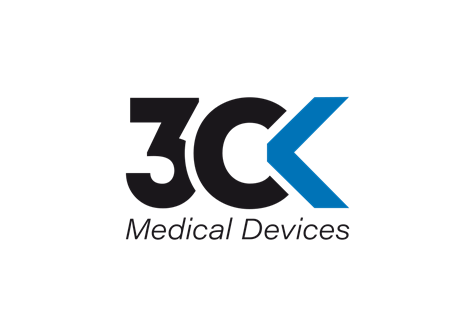
-

-
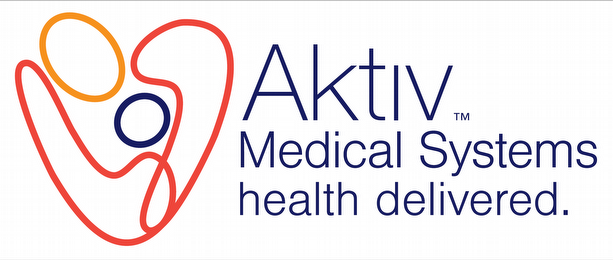
-
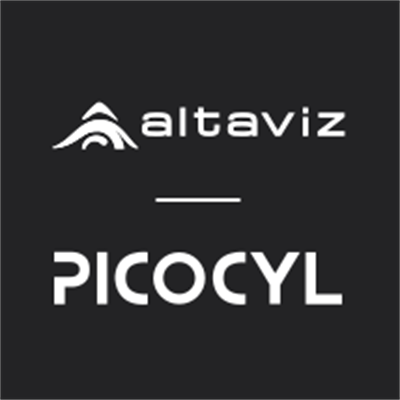
-

-
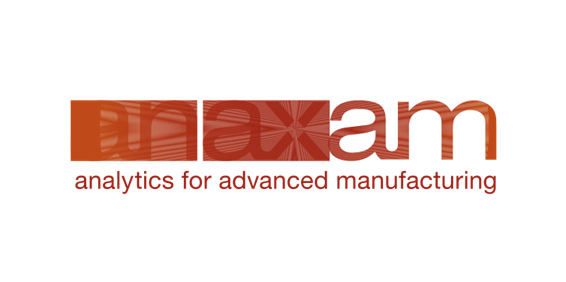
-
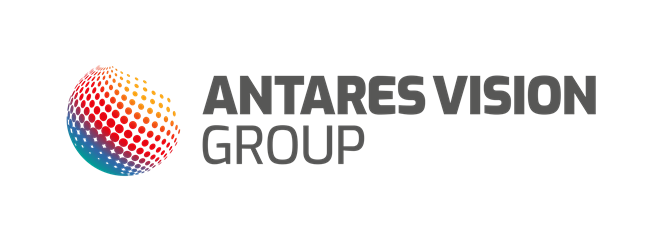
-
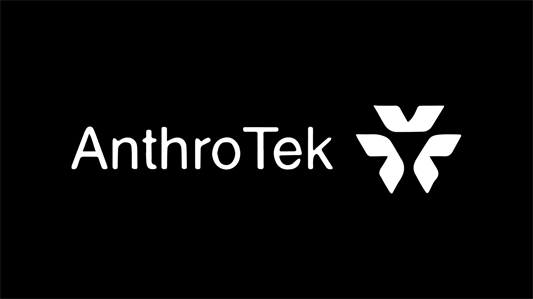
-
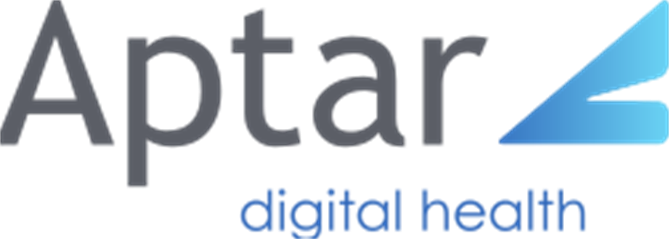
-

-

-
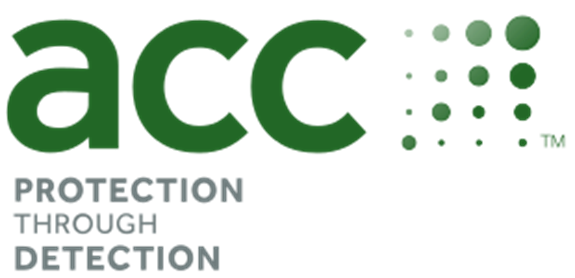
-
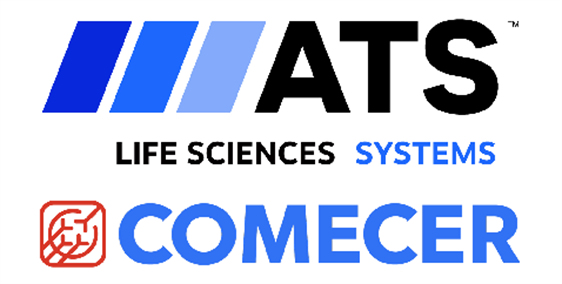
-

-

-

-
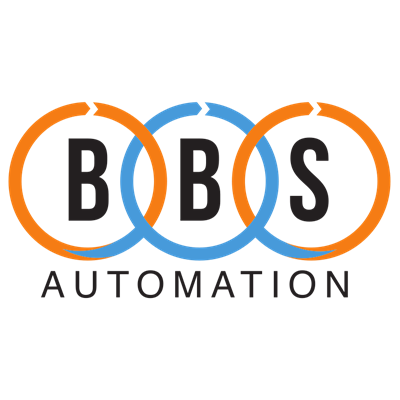
-

-

-
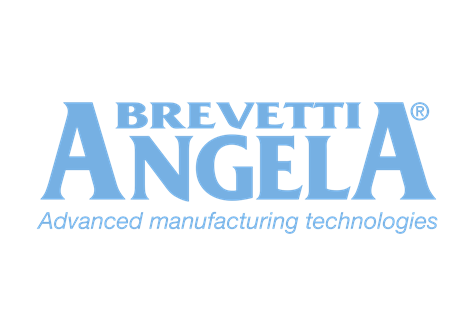
-
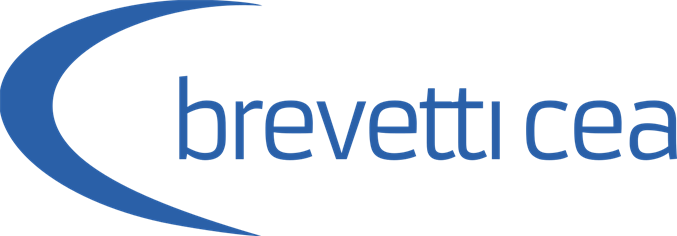
- Cangzhou Four Stars Glass Co., Ltd
-
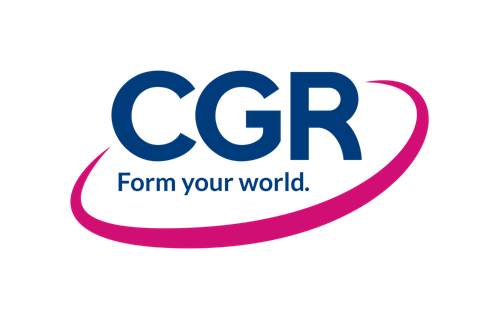
-

-

- Cormica
-

-

-

-

-

-

-
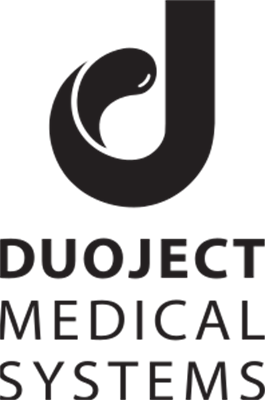
-
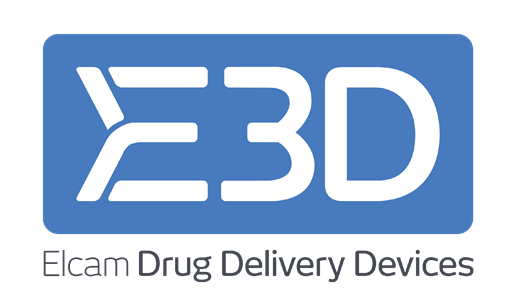
-

-
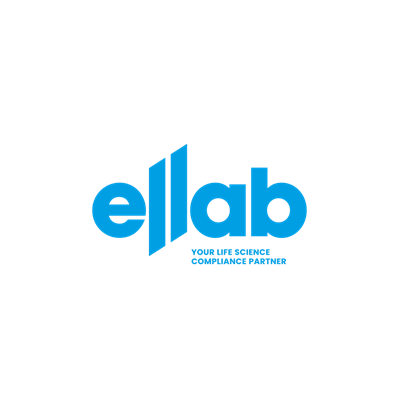
-

-

-

-

-
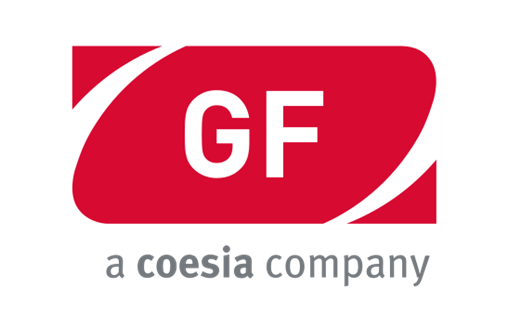
-

-

-

-

-

-

-

-

-

-

-

-

-

-

-

-
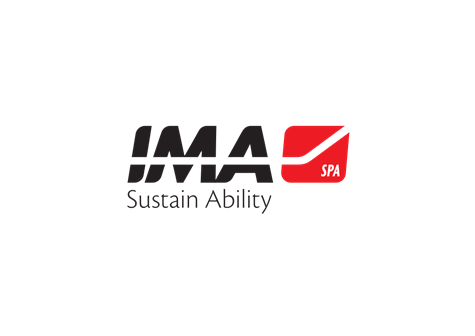
-

-

-

-

-

-

-
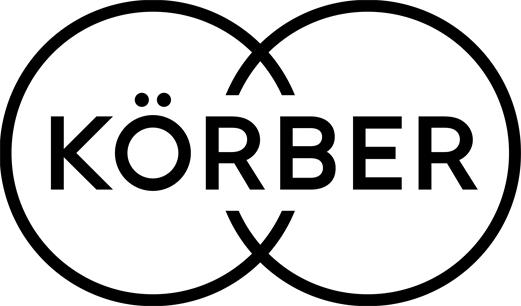
-

-

-

-

-

- LTS
- Lyoohilization Technolgy Inc.
-

-

-
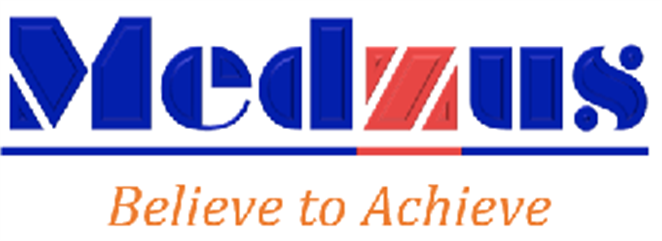
-

-

-
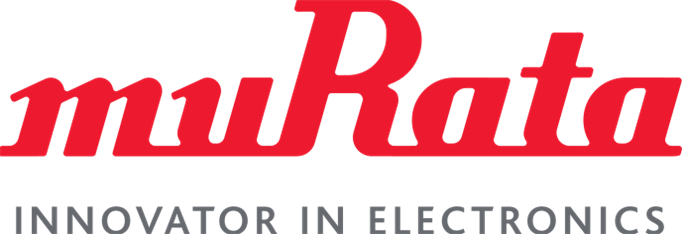
-

-

-

-

-
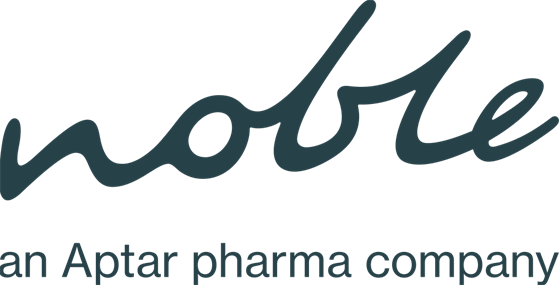
-

-
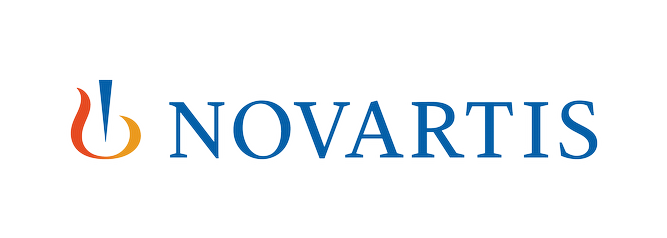
-
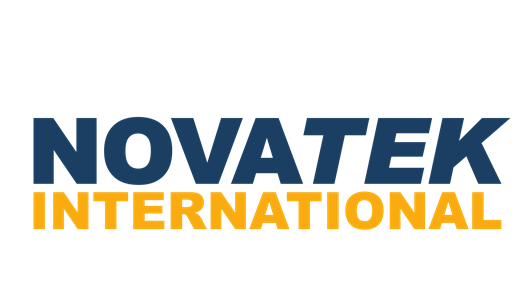
-
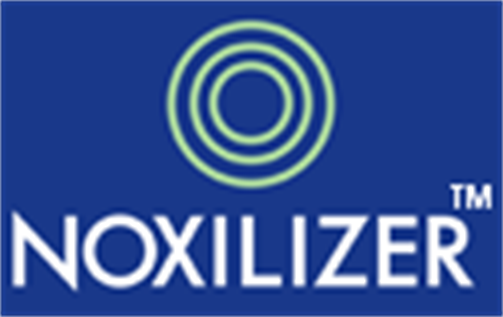
-

-

-

-

-

-
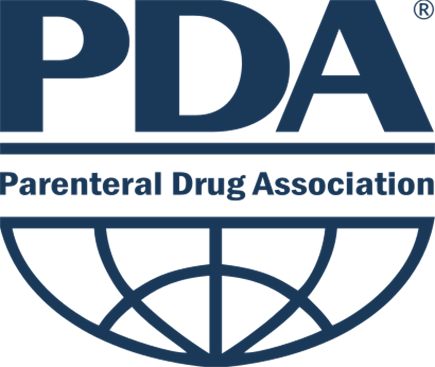
-
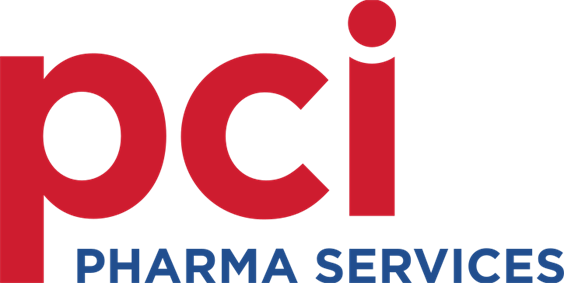
-

- Pharma Latch
-

-
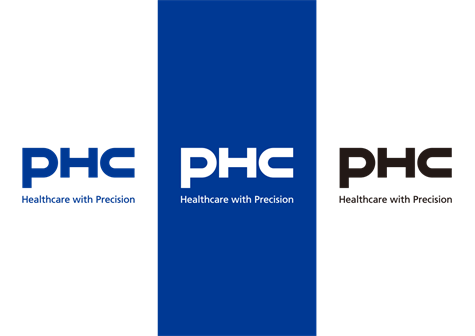
-

-
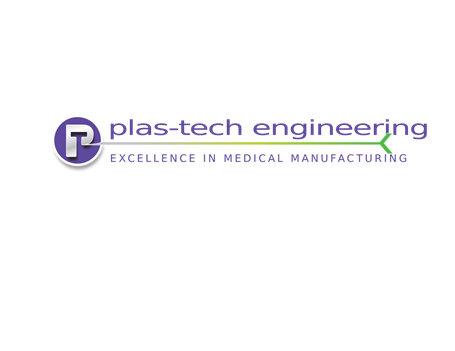
-
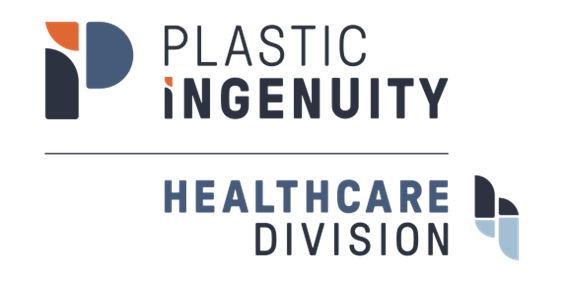
-

-
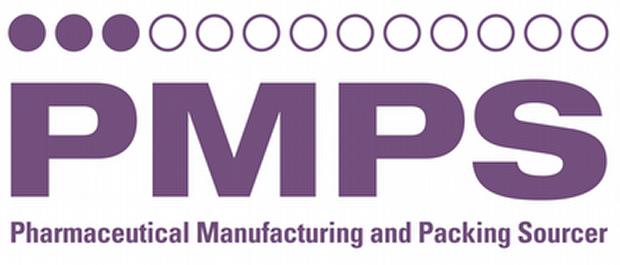
-

-

-

-

-

-

-

-

-

-
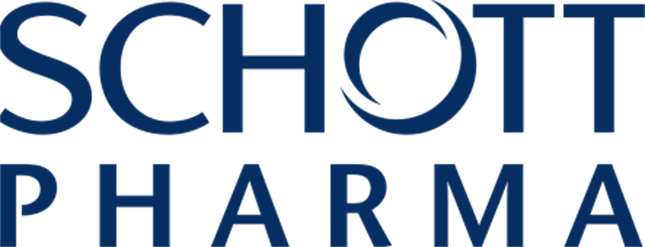
-

-

-
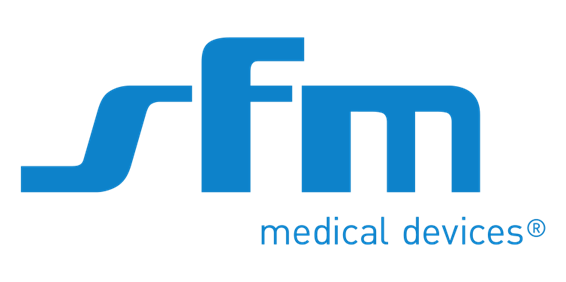
-

-

-
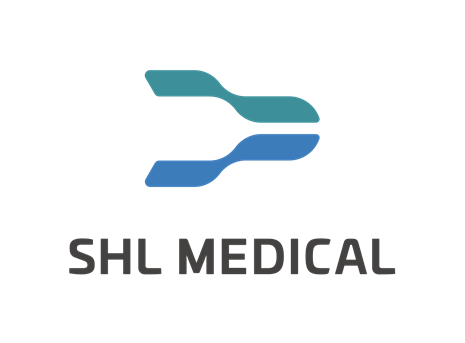
-

-
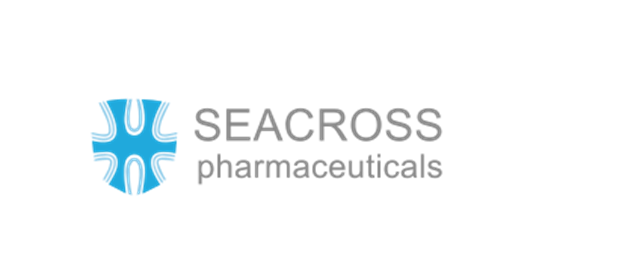
-

-
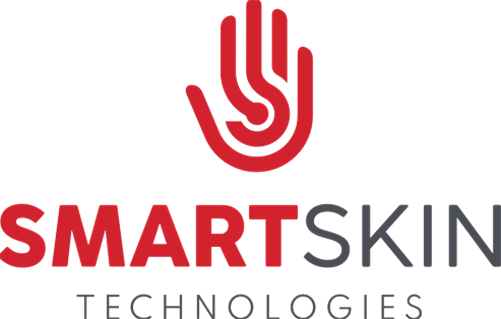
-

-

- SteriPack Group
-

-

-
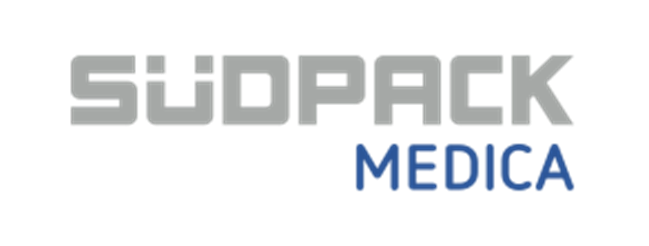
-

-

-

-

-

-

-

-

-

-
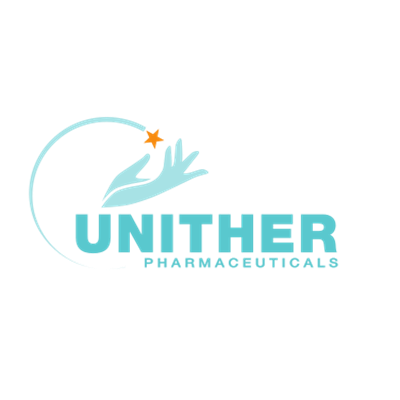
-
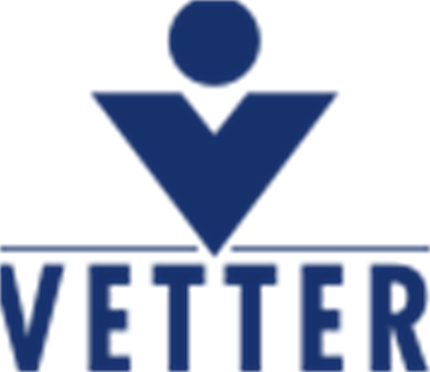
-

-

-

-

-

-
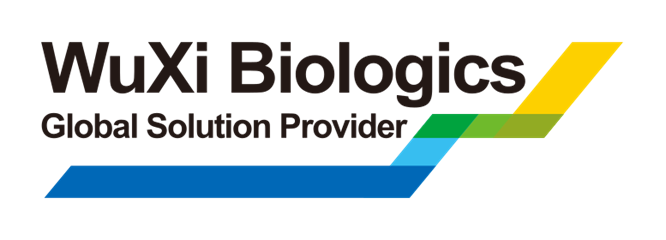
-

-

-

-

Attendee List Email Scam
Unfortunately, emails are circulating that offer to sell attendee lists for many of PDA's conferences and events. These emails are sent by scammers.
Note: PDA does not sell its exhibitor or attendee lists, and no third-party is authorized to distribute or sell any lists related to our events. Statements claiming to offer our attendee lists are fraudulent. If you receive emails that propose to sell PDA conference attendee lists, do not engage with the sender and delete the message immediately.
Media Partners
Trusted Media Collaborators
Become a Sponsor and/or Exhibitor
Amplify Your Presence and Reach Your Customers!
Become a Sponsor
Elevate your brand and maximize your exposure by becoming a sponsor at the PDA Universe of Pre-Filled Syringes and Injection Devices Conference 2025! Connect with industry leaders, showcase your products and services, and establish your company as a key player in the field.
Request InformationBecome an Exhibitor
Boost your brand and visibility by becoming an exhibitor at the PDA Universe of Pre-Filled Syringes and Injection Devices Conference 2025! Connect with industry influencers, showcase your products and services, and position your company as a key player in the field.
Request InformationPromotions and Press
Request Press Pass
Submit Your InformationHave a question or need assistance?
Send us a message, and our team will get back to you shortly. We're here to help!















































































































